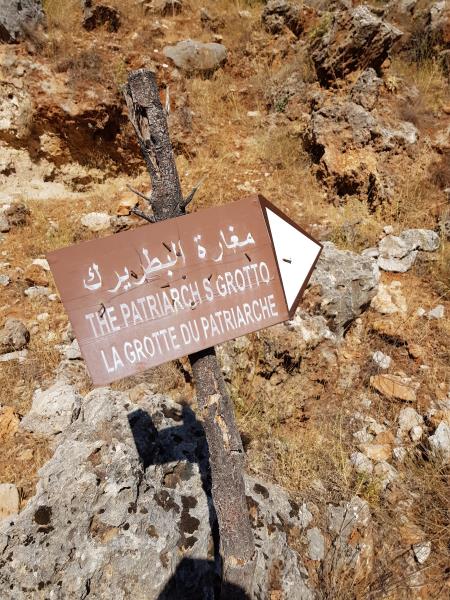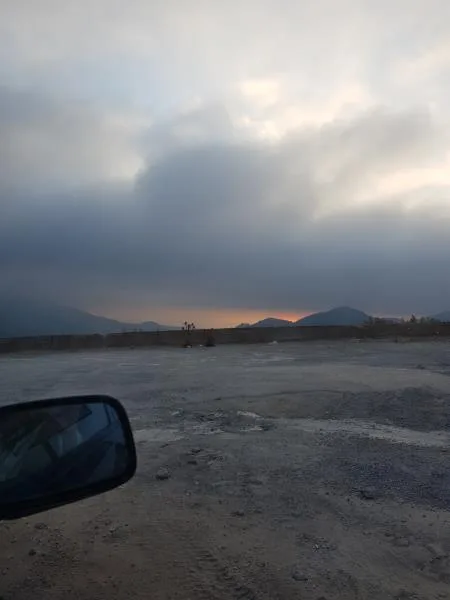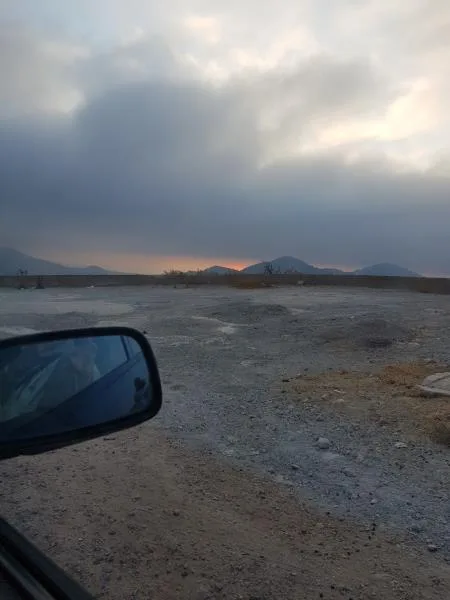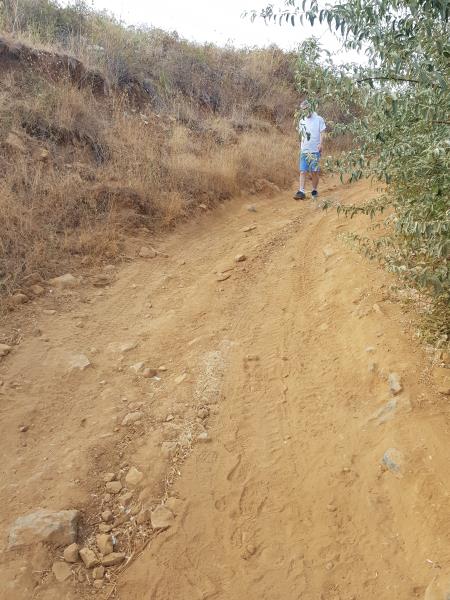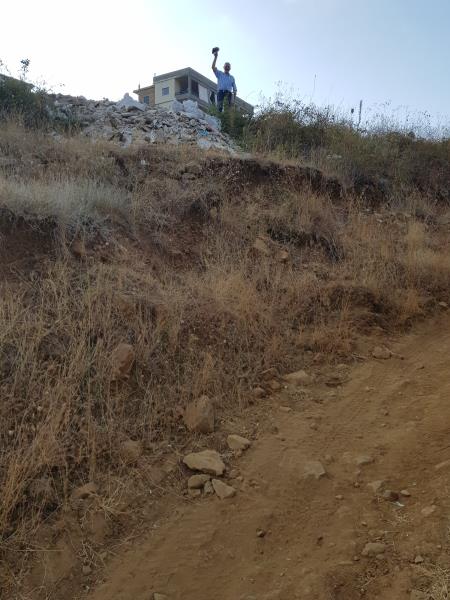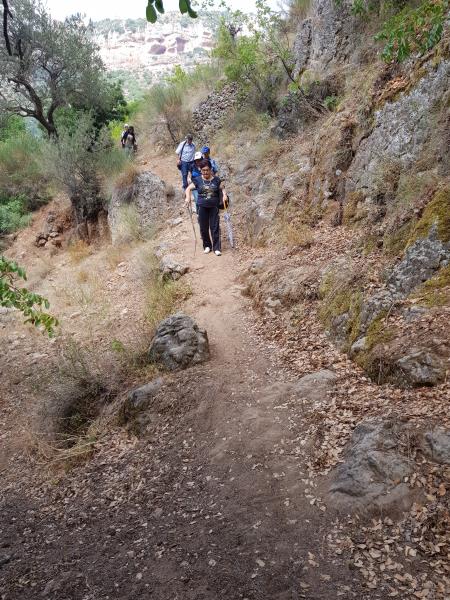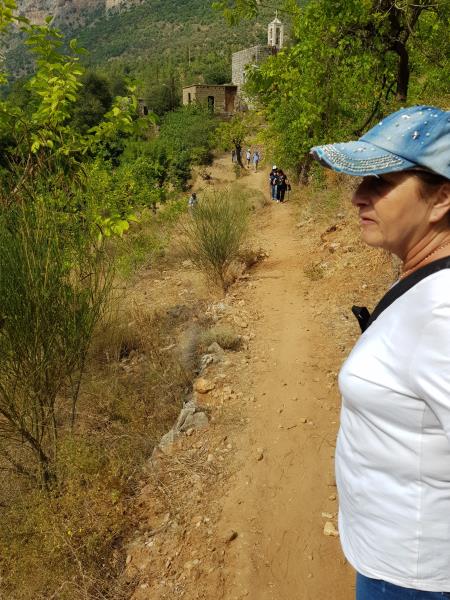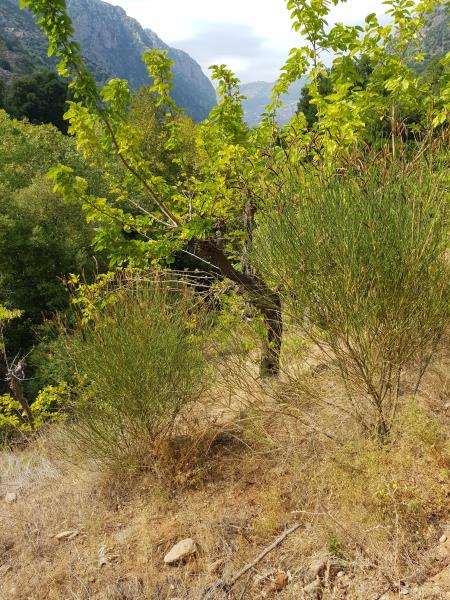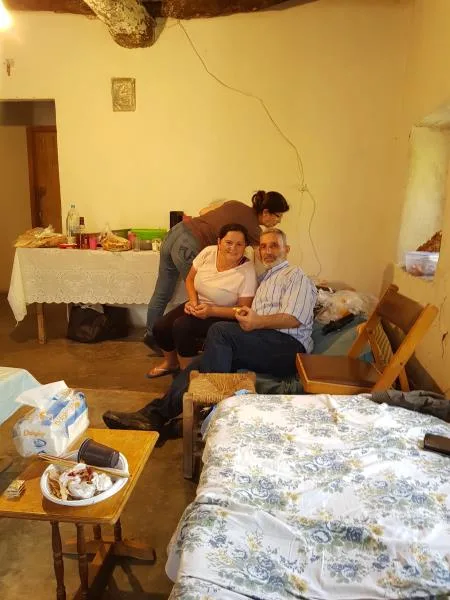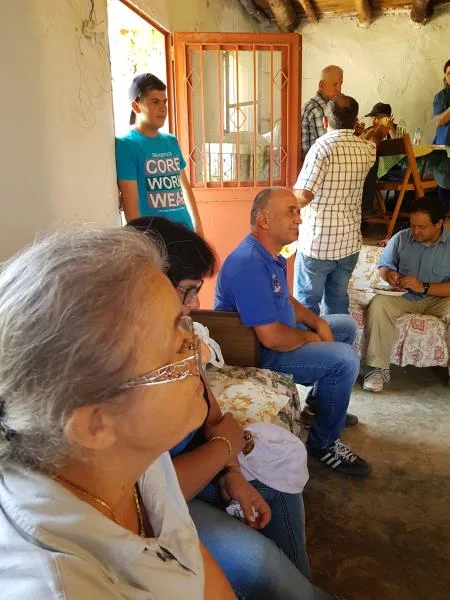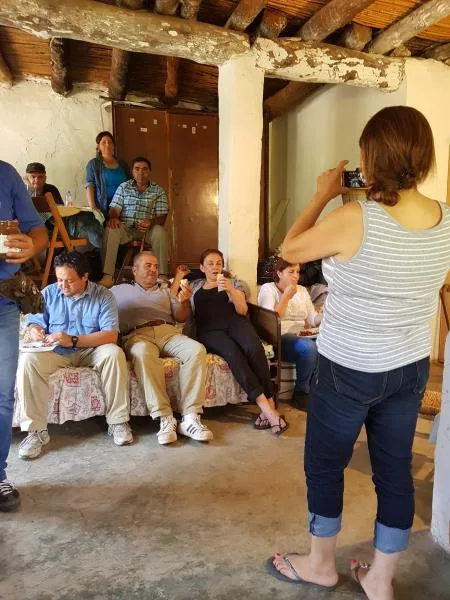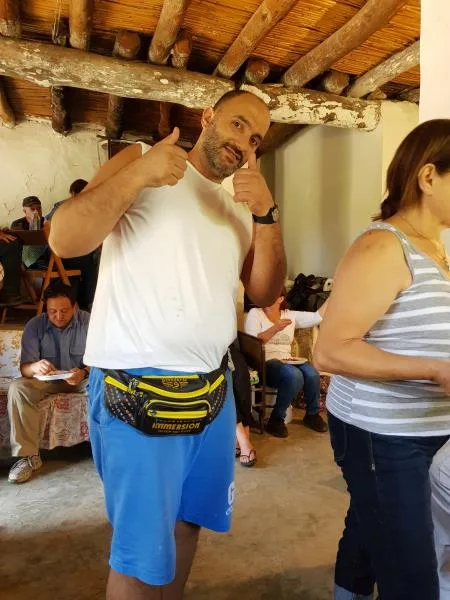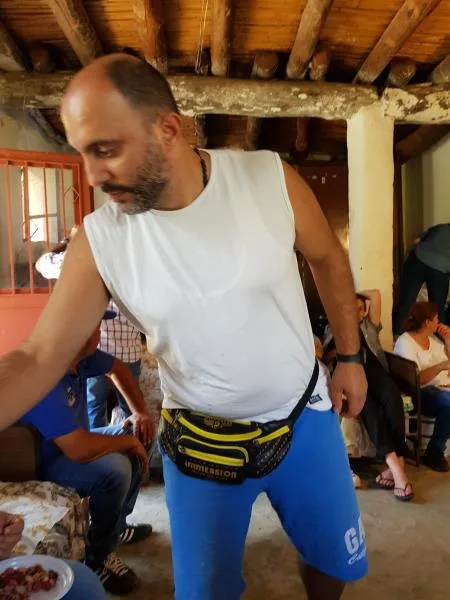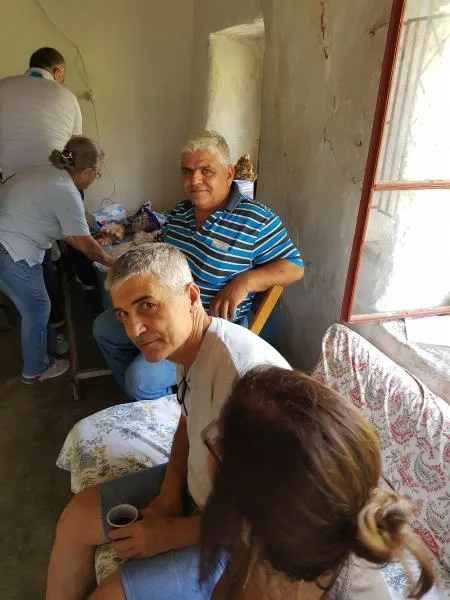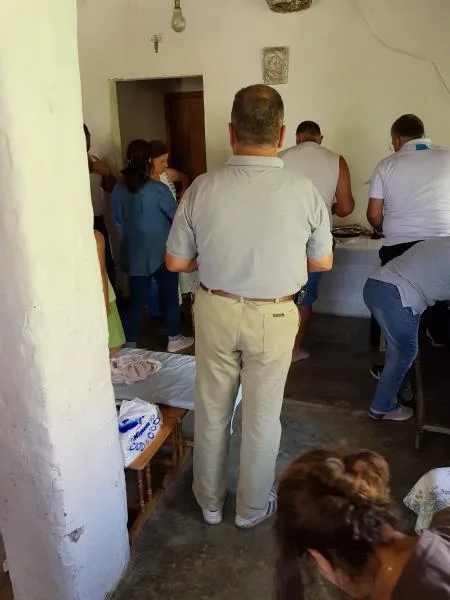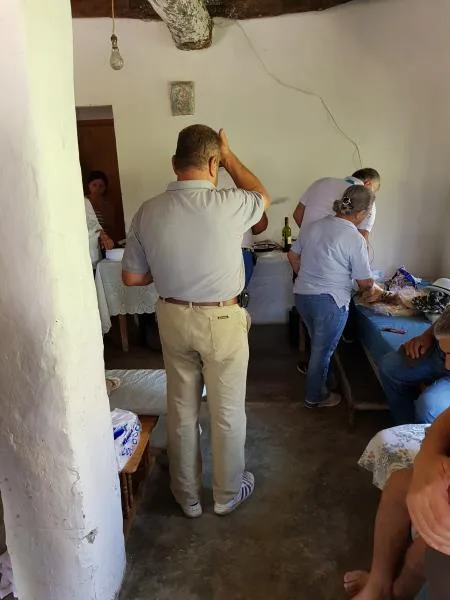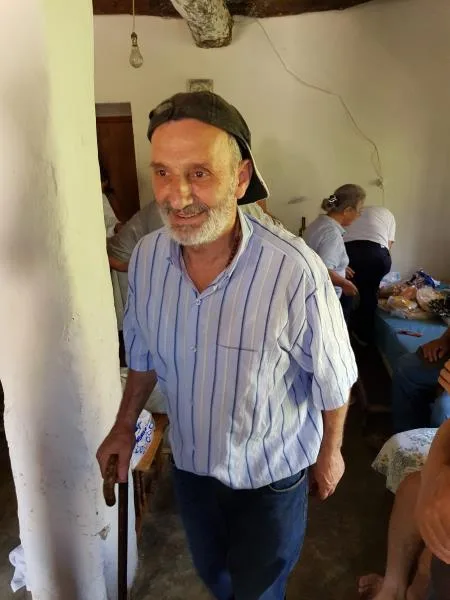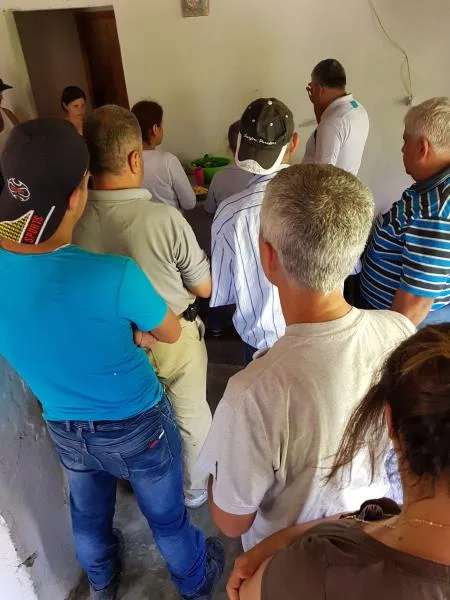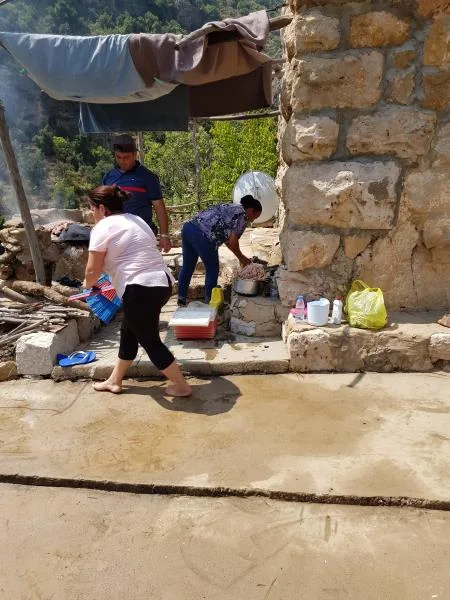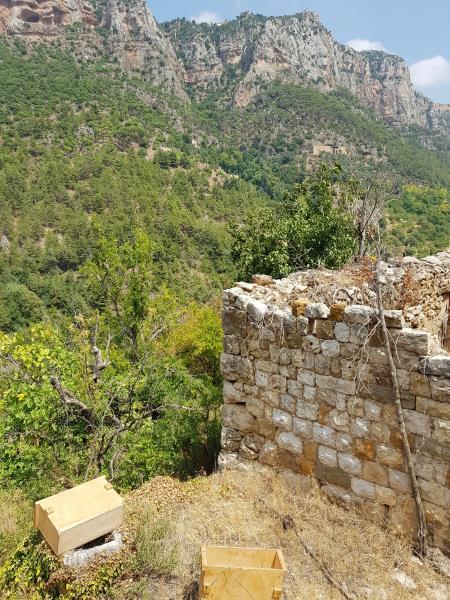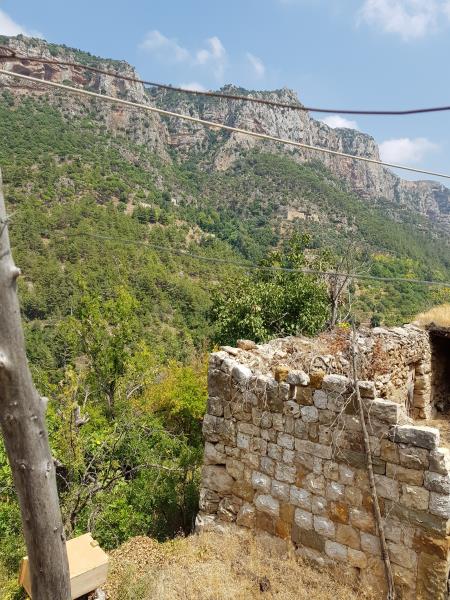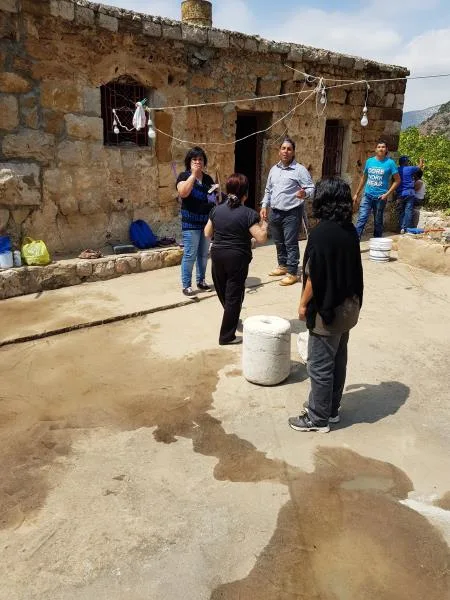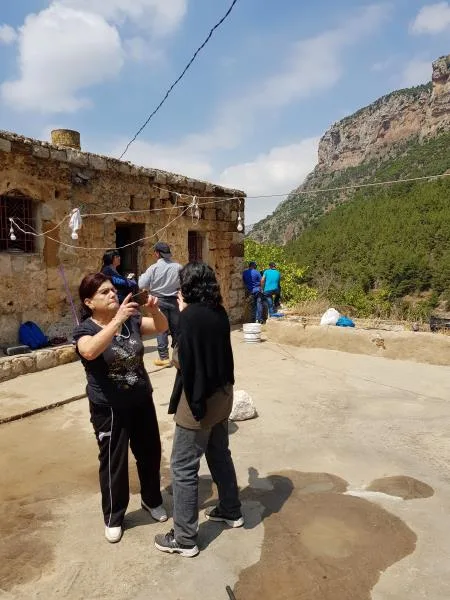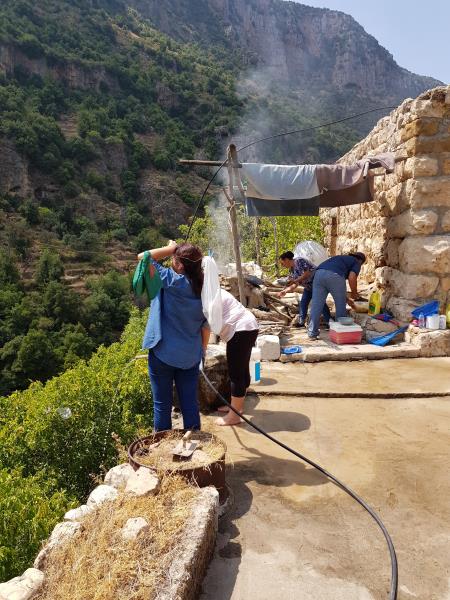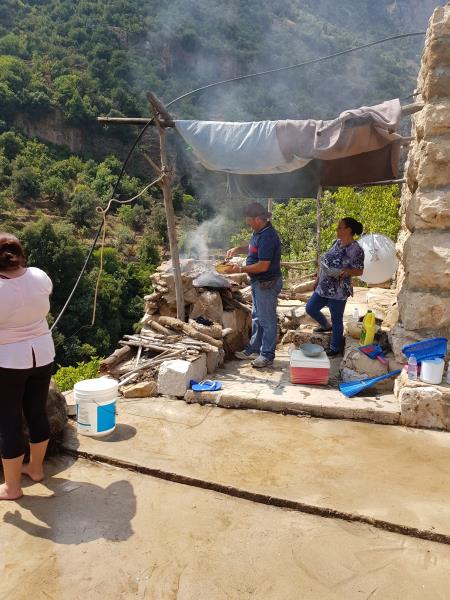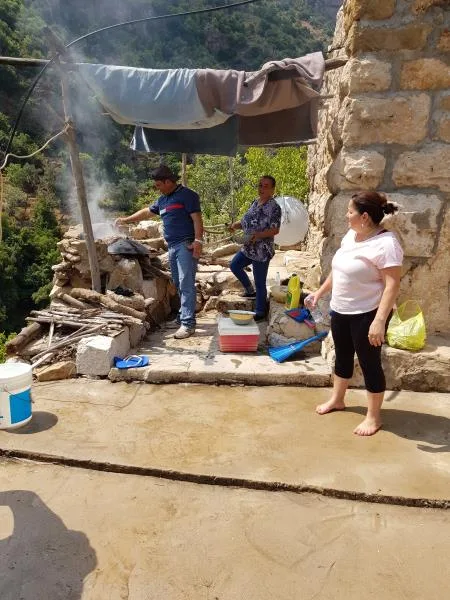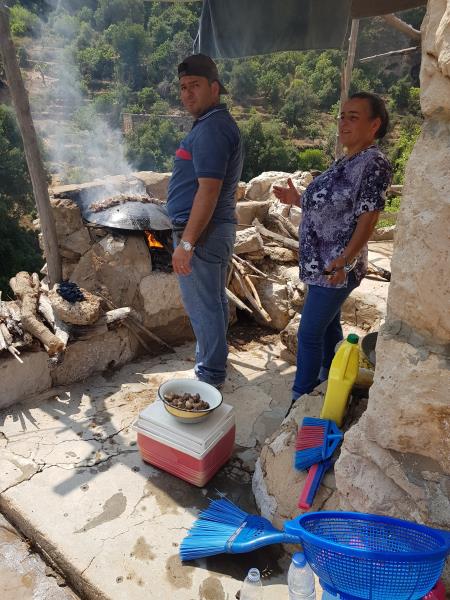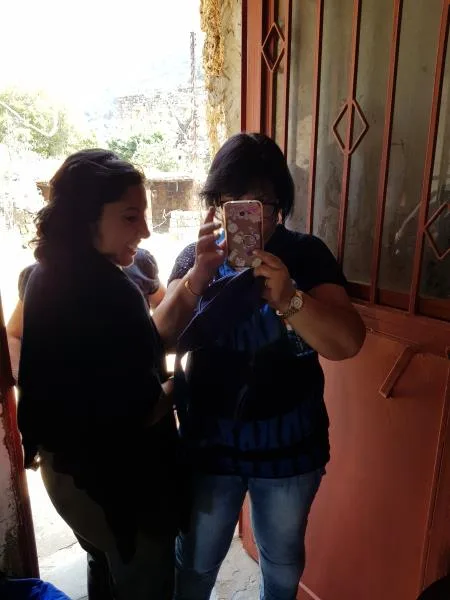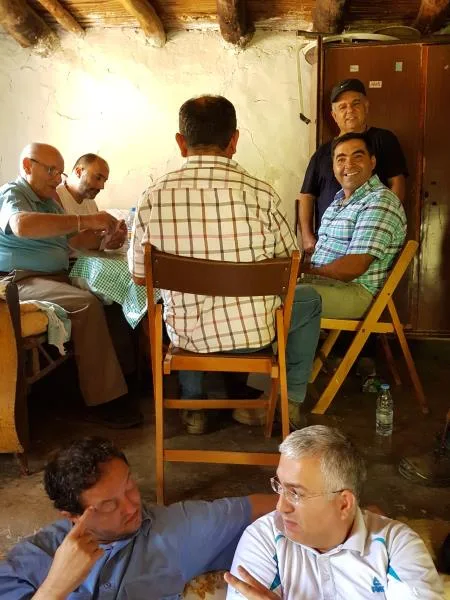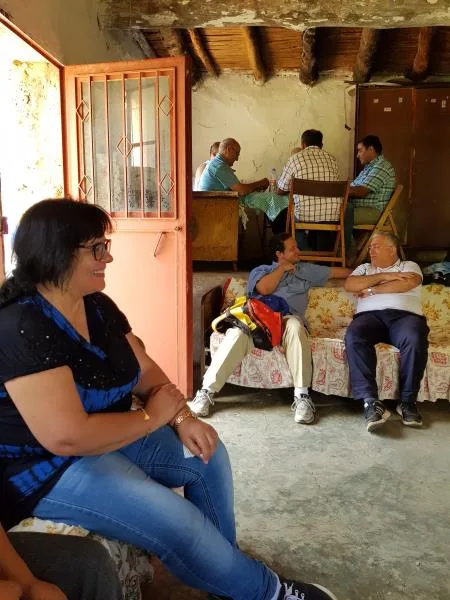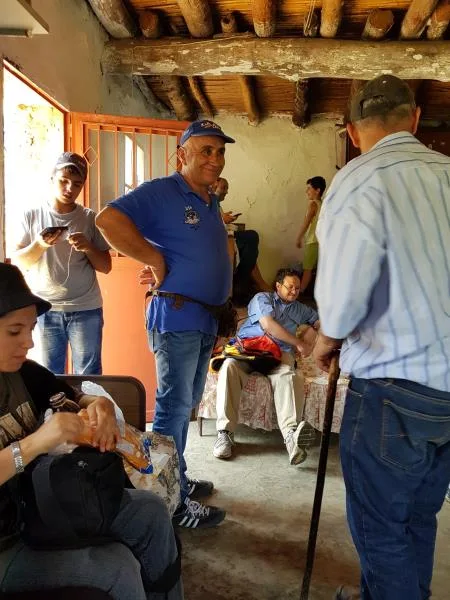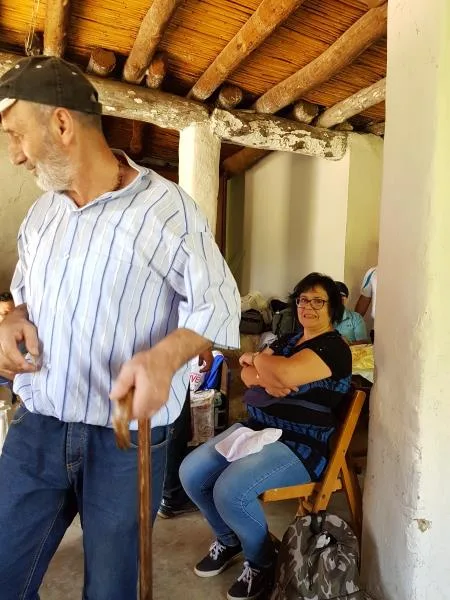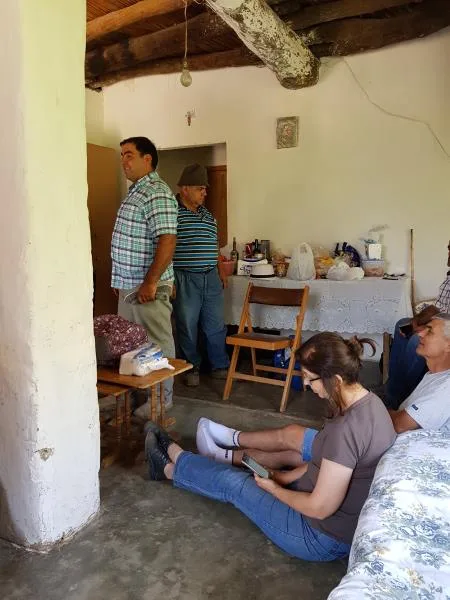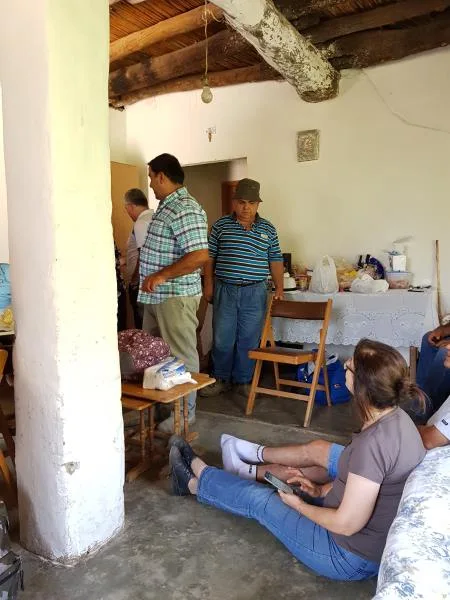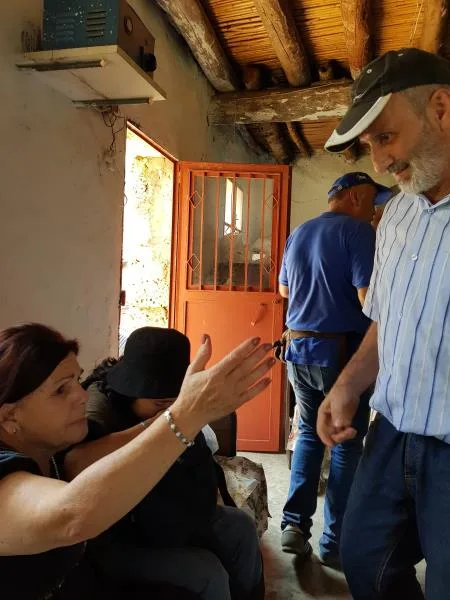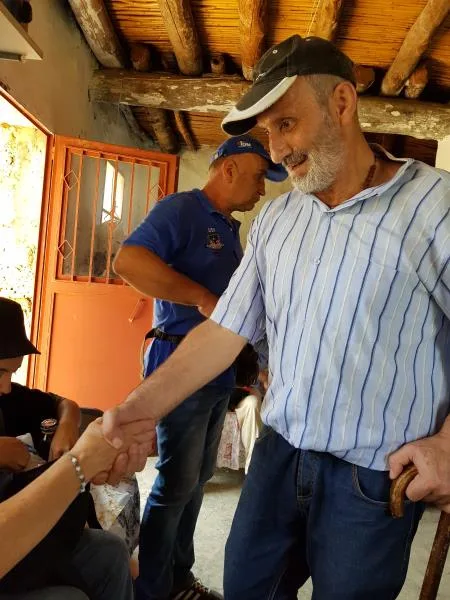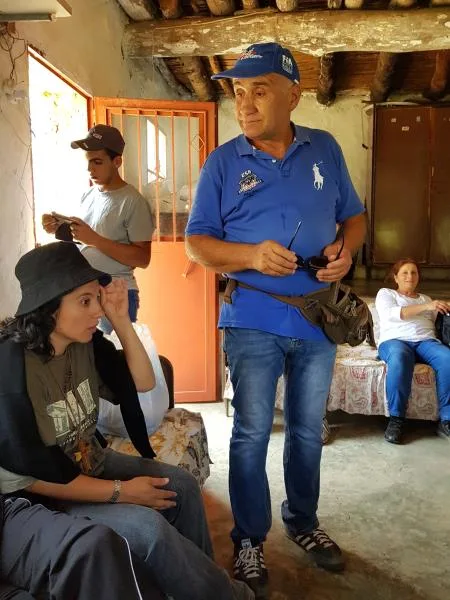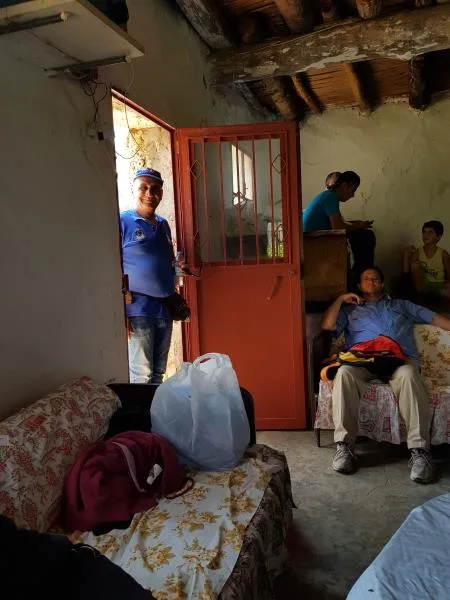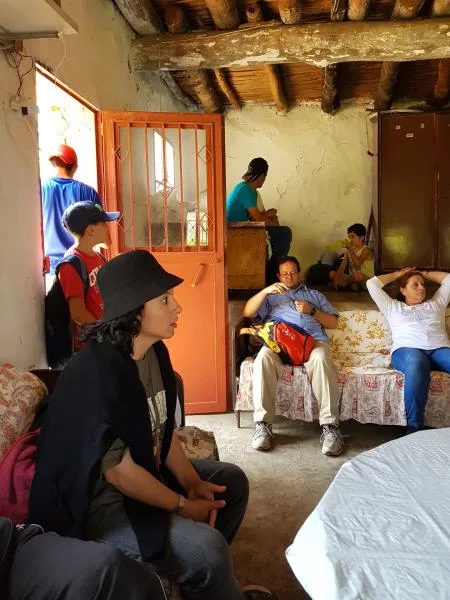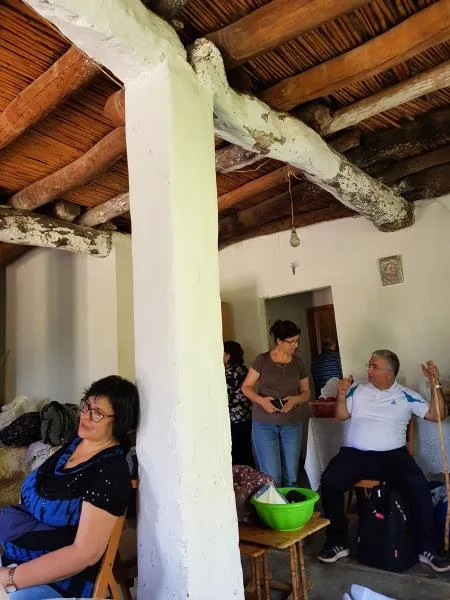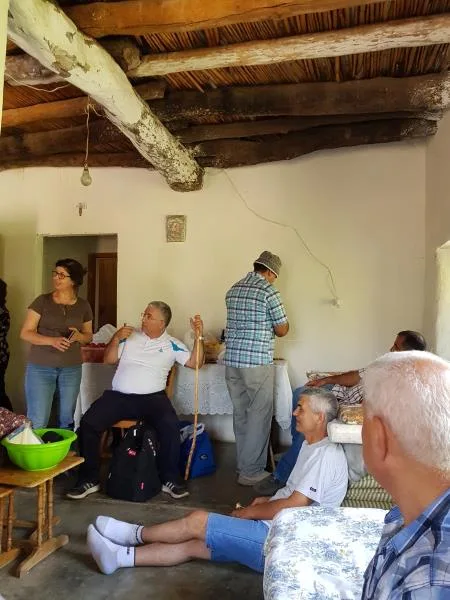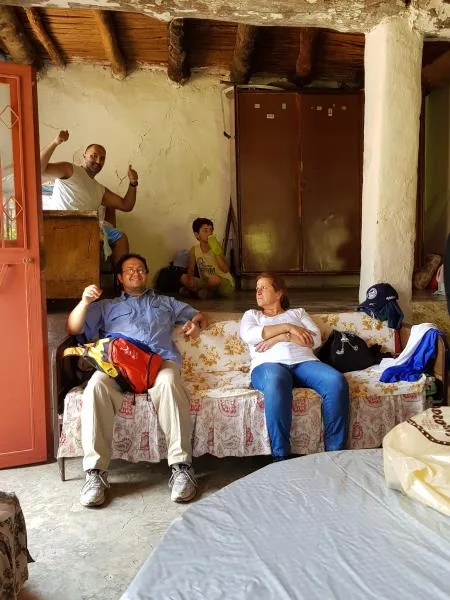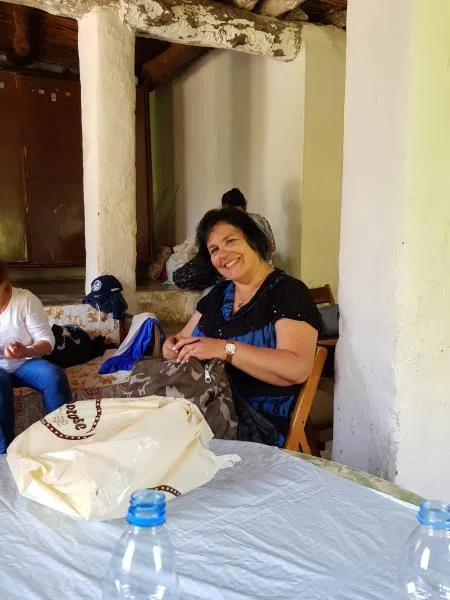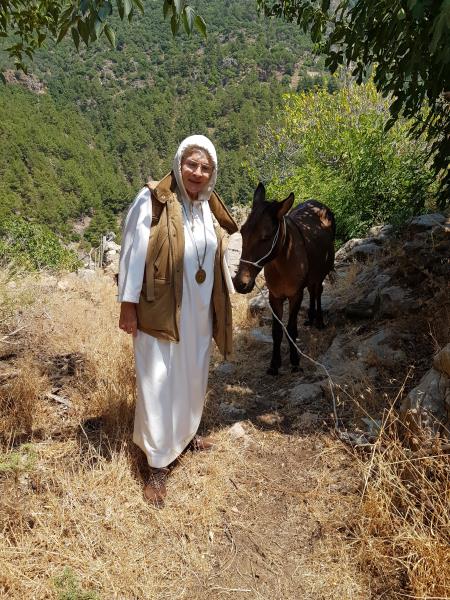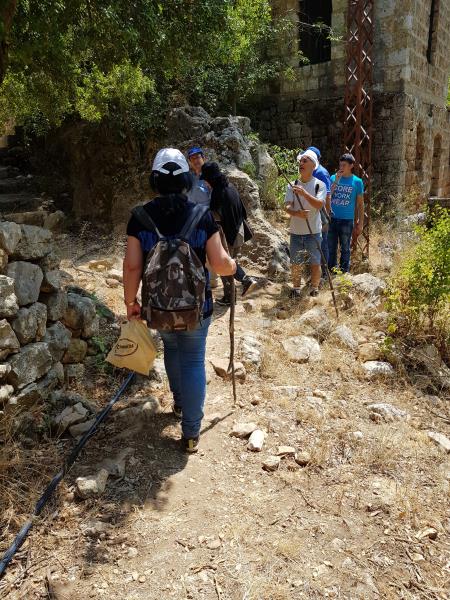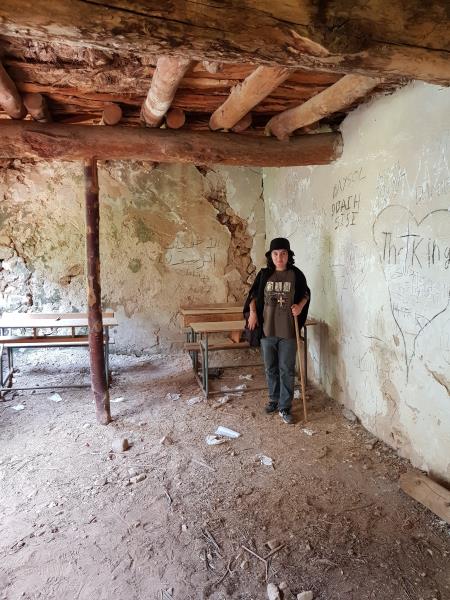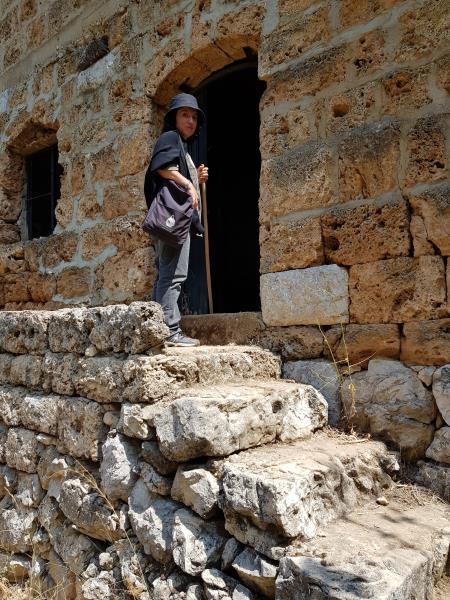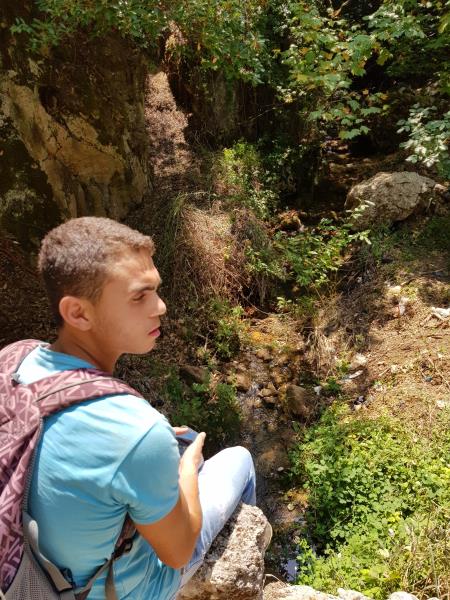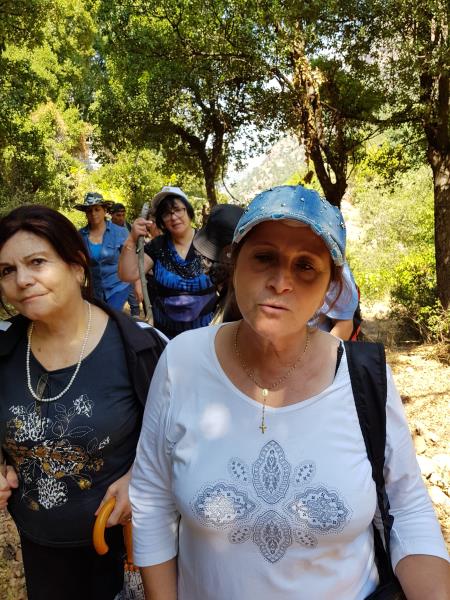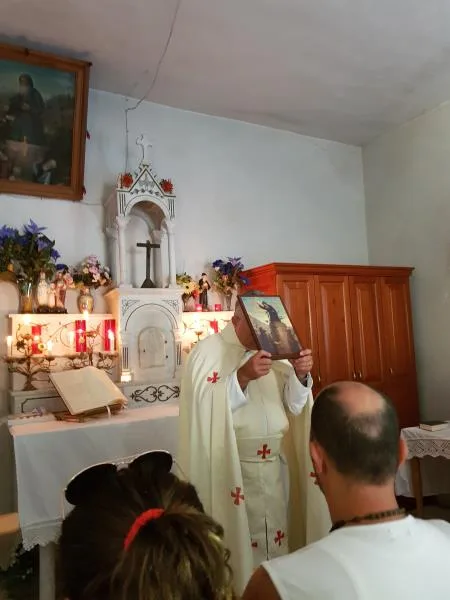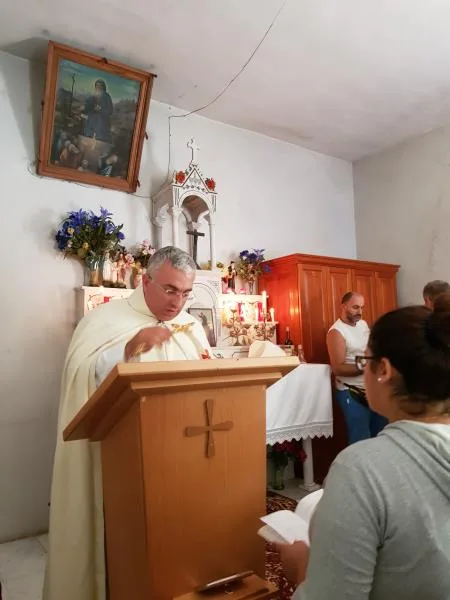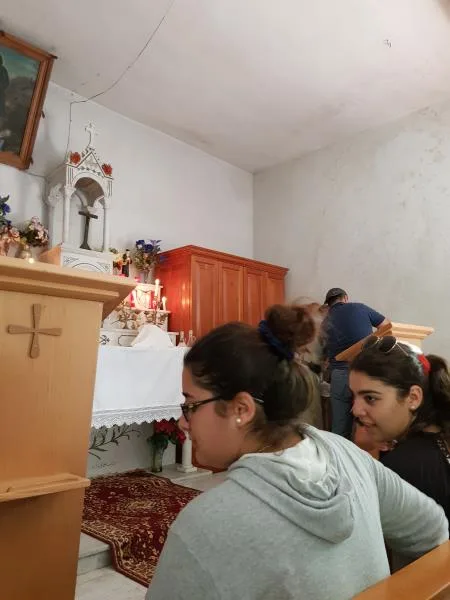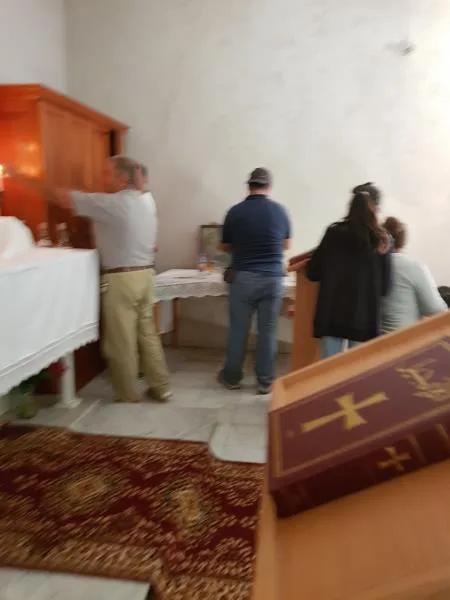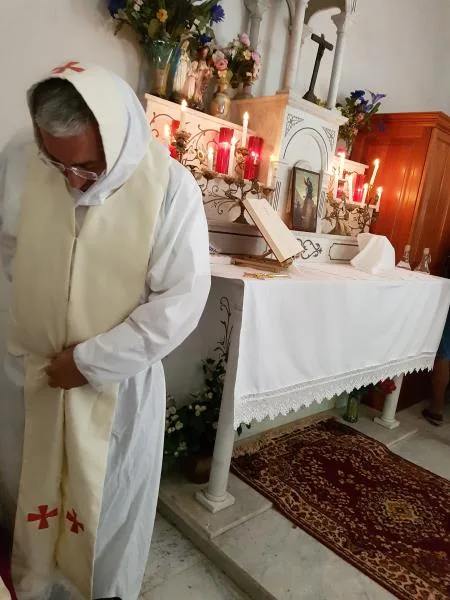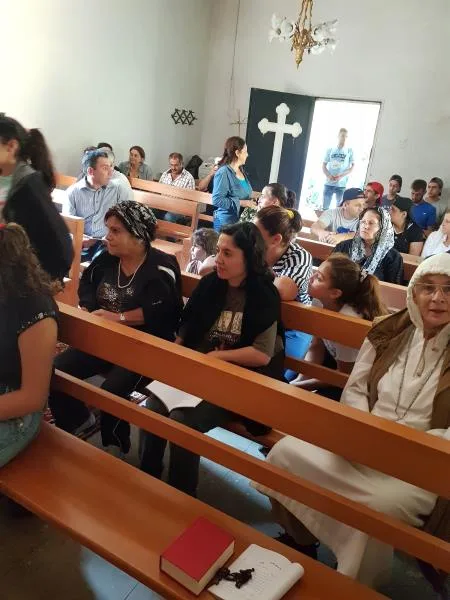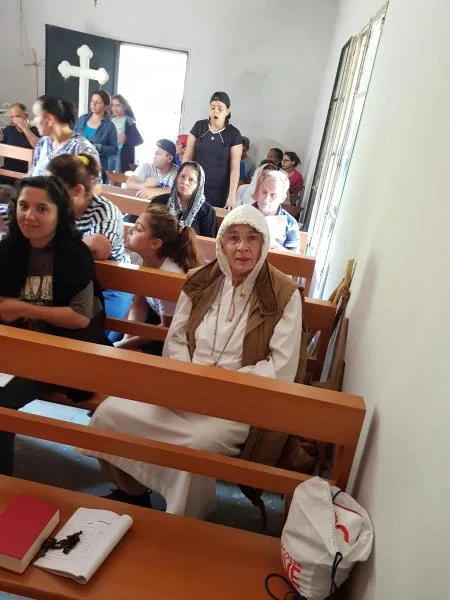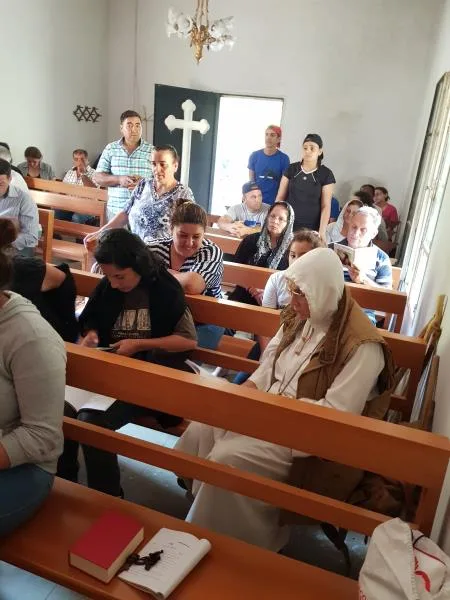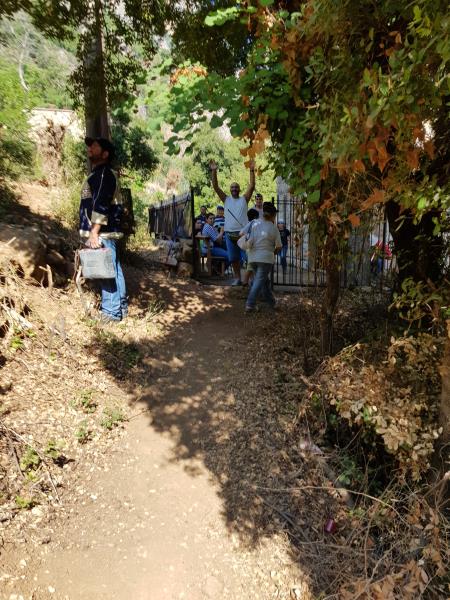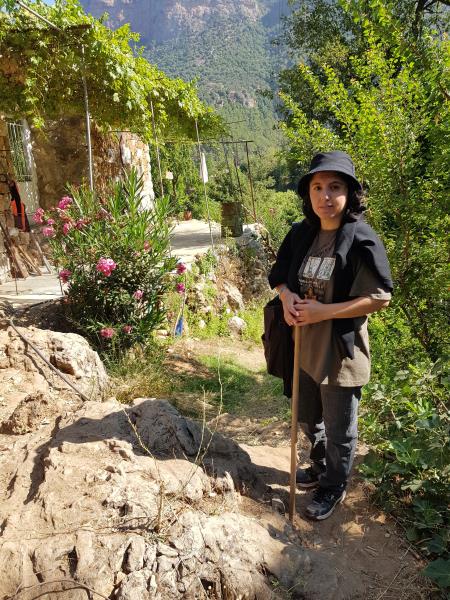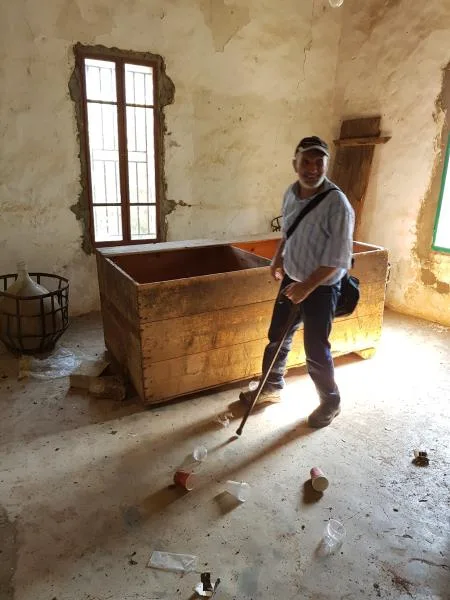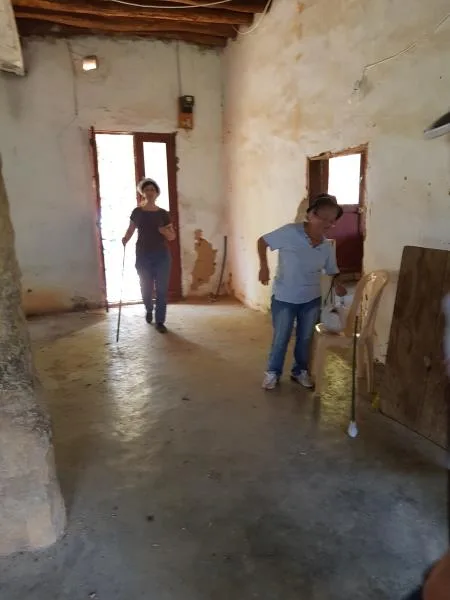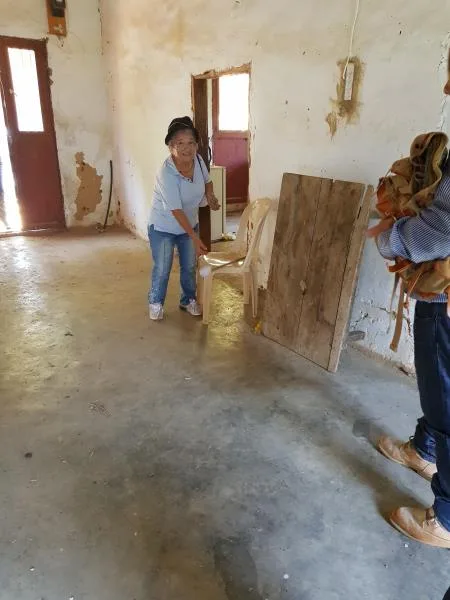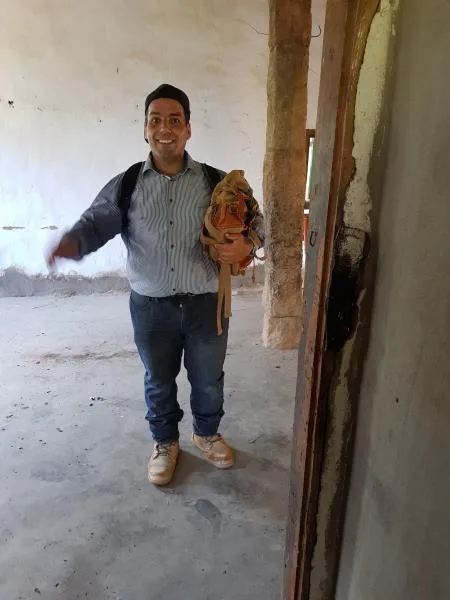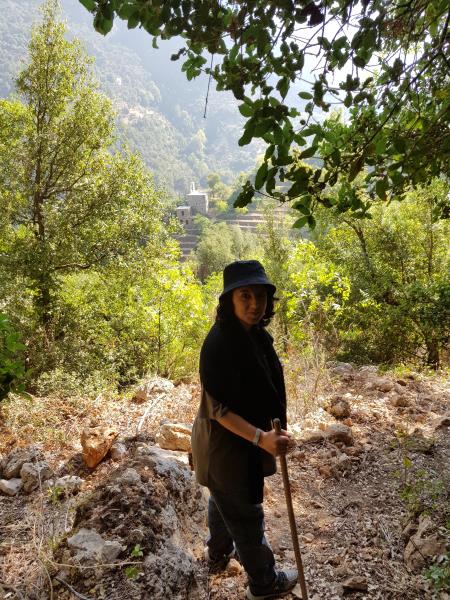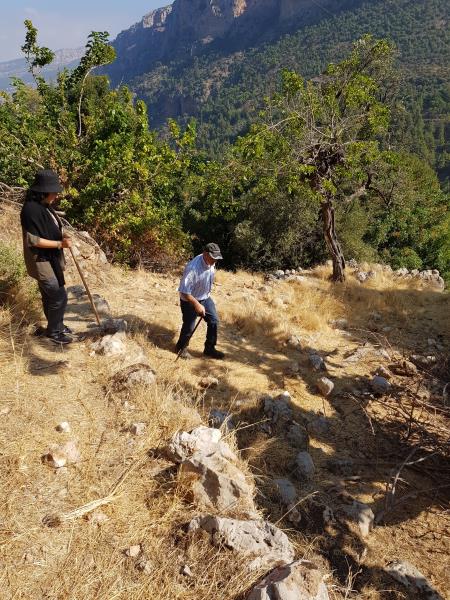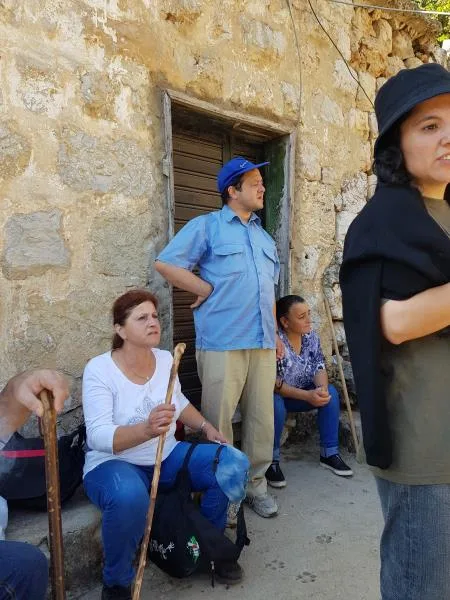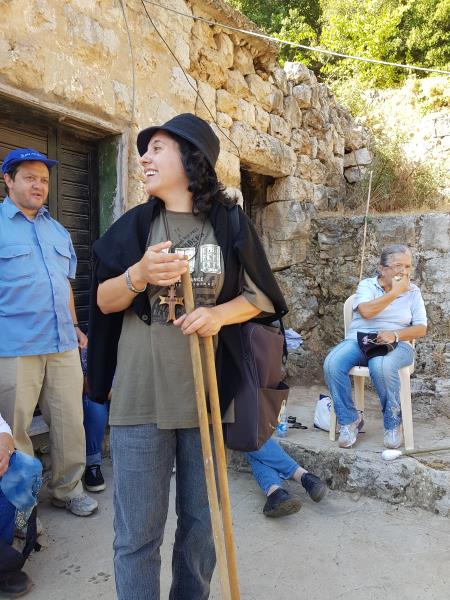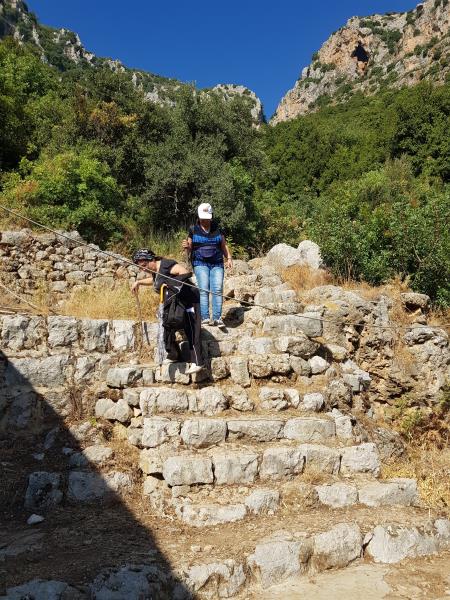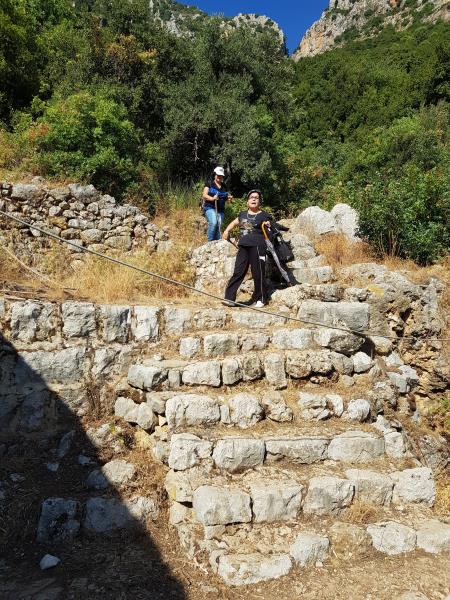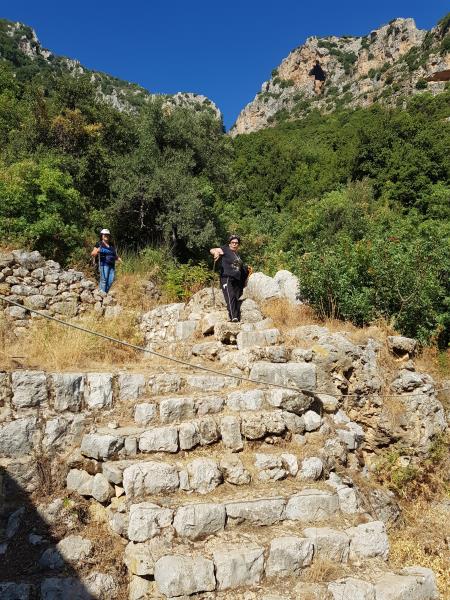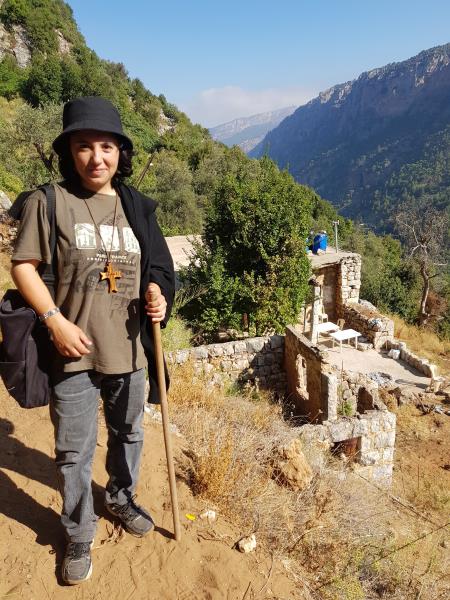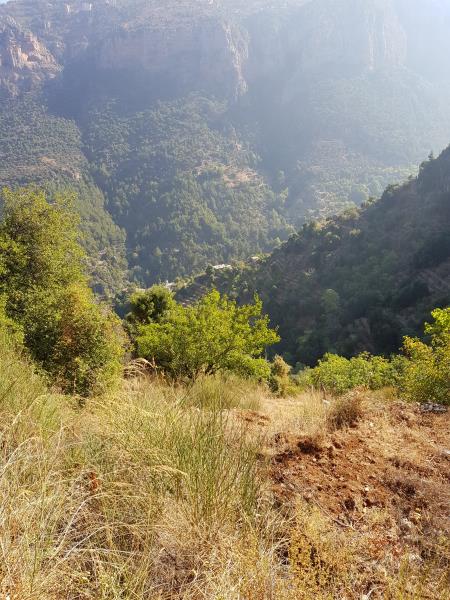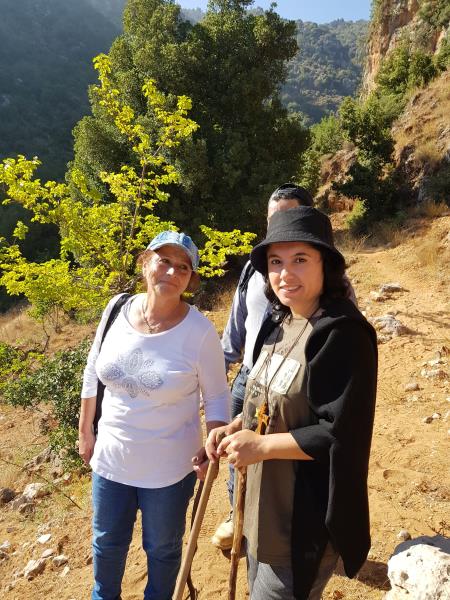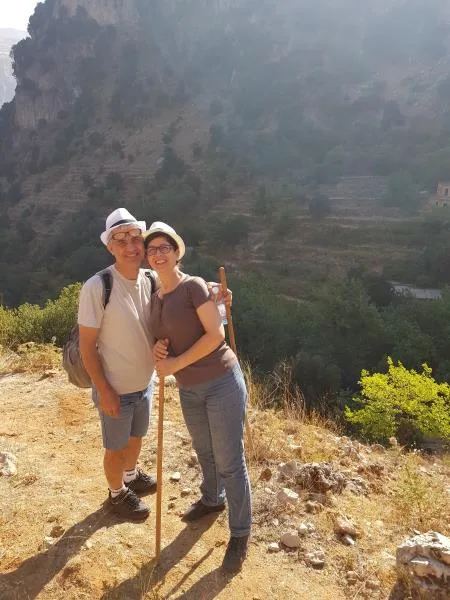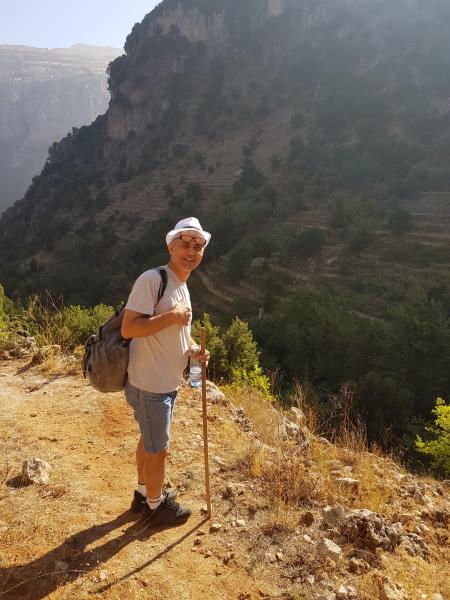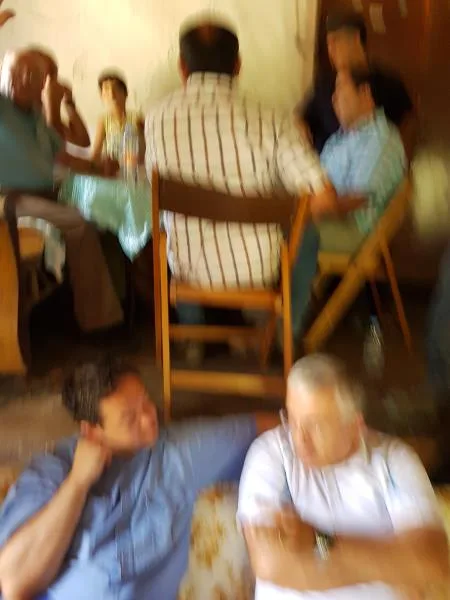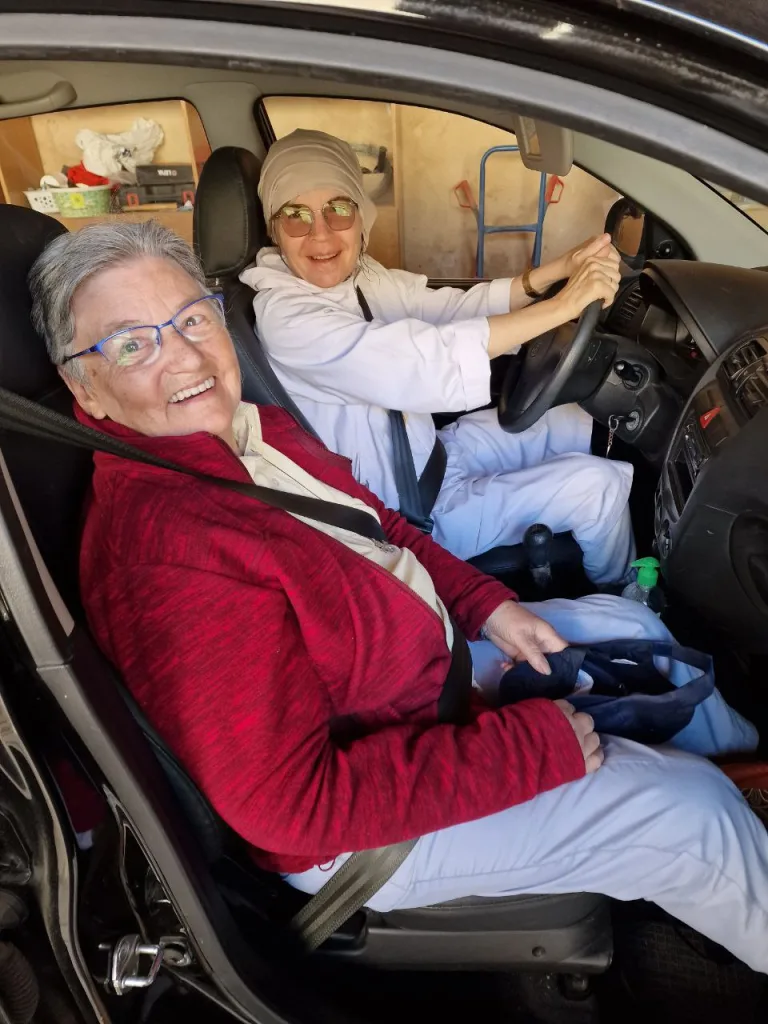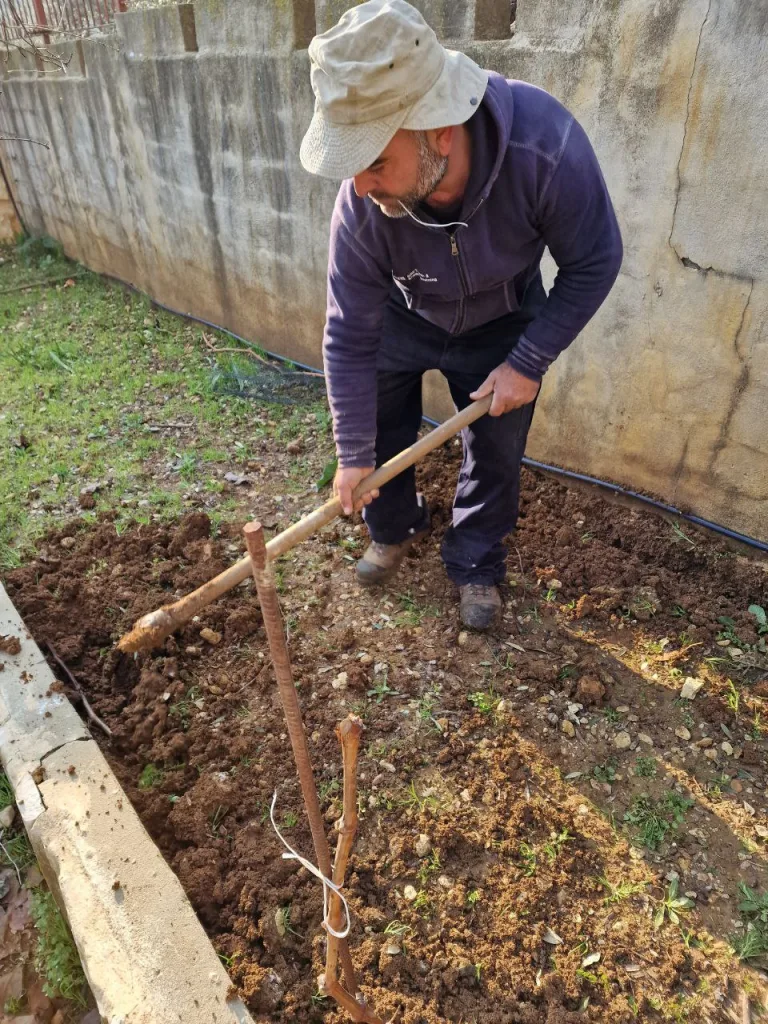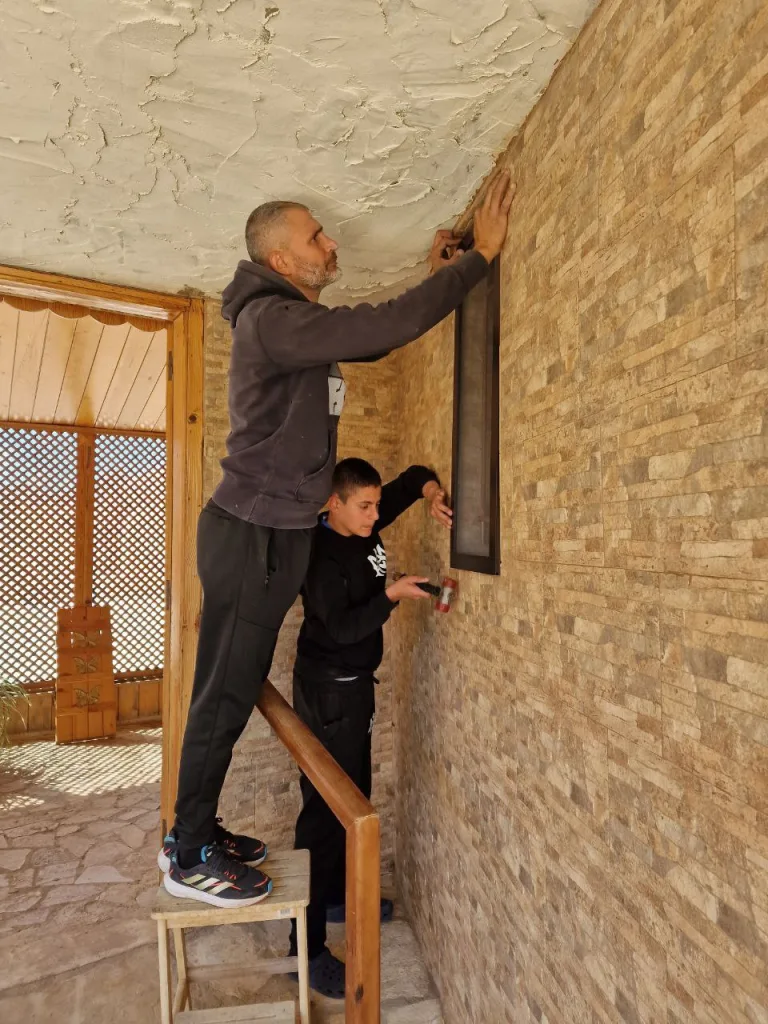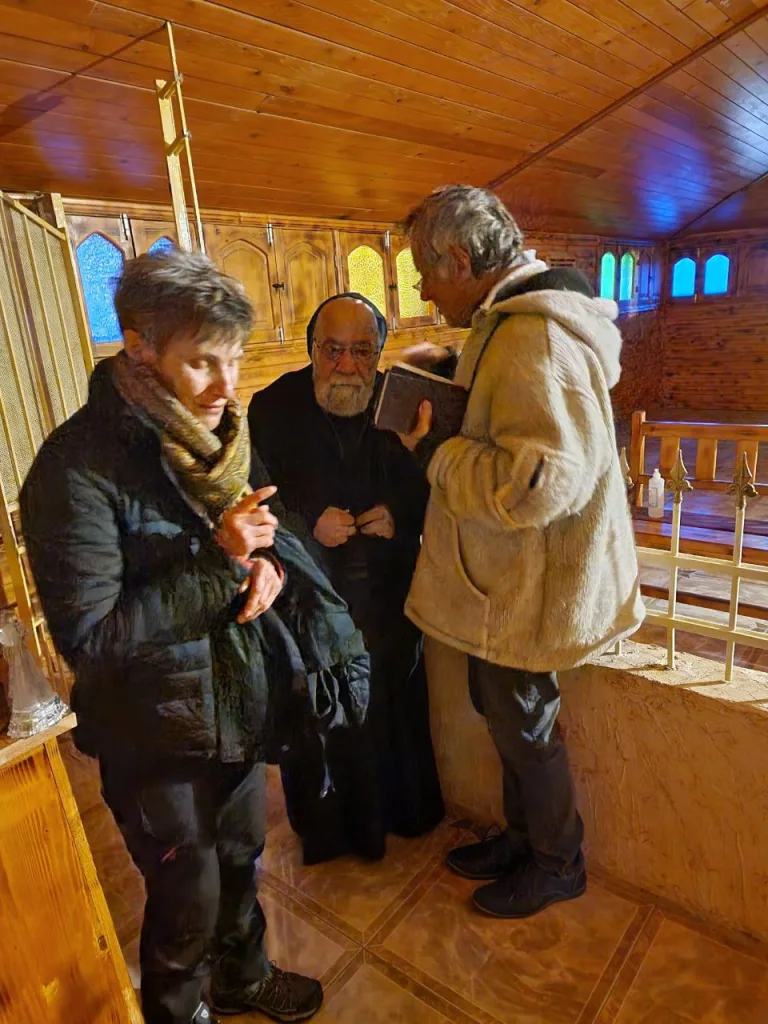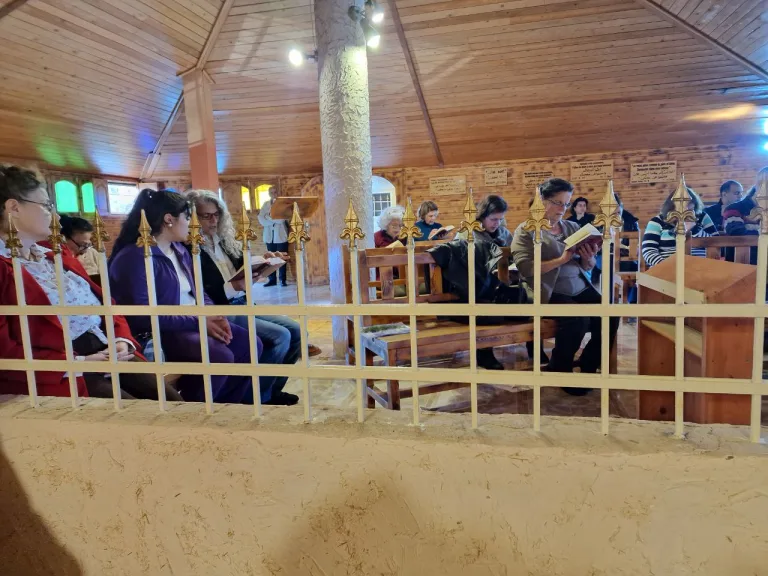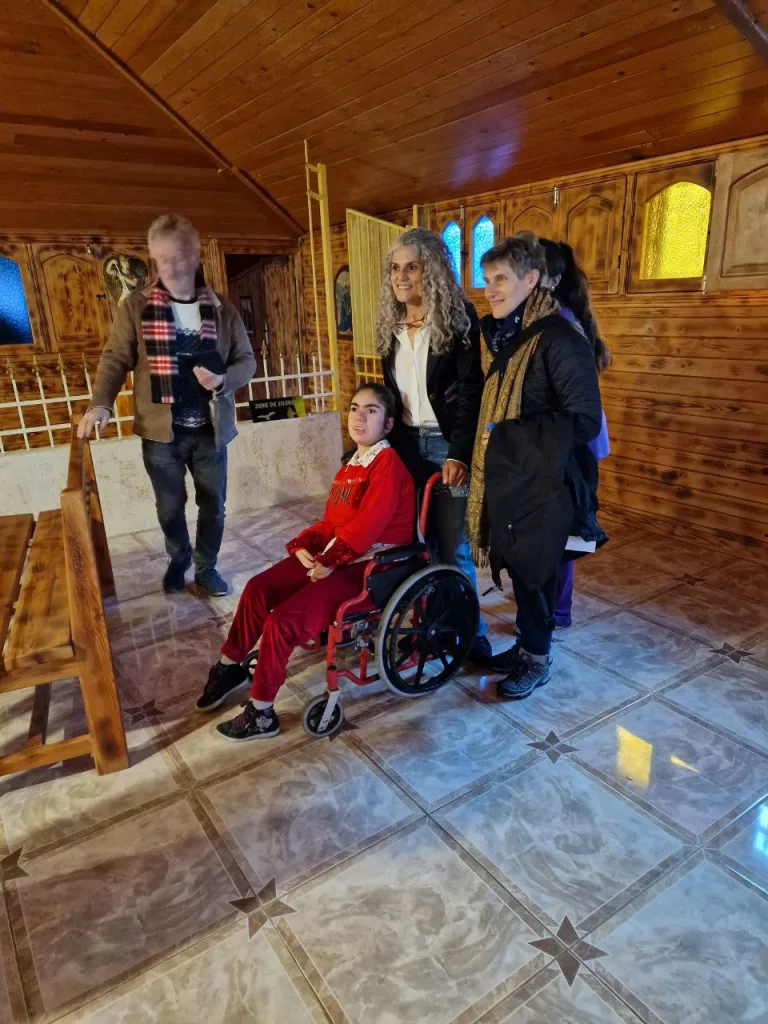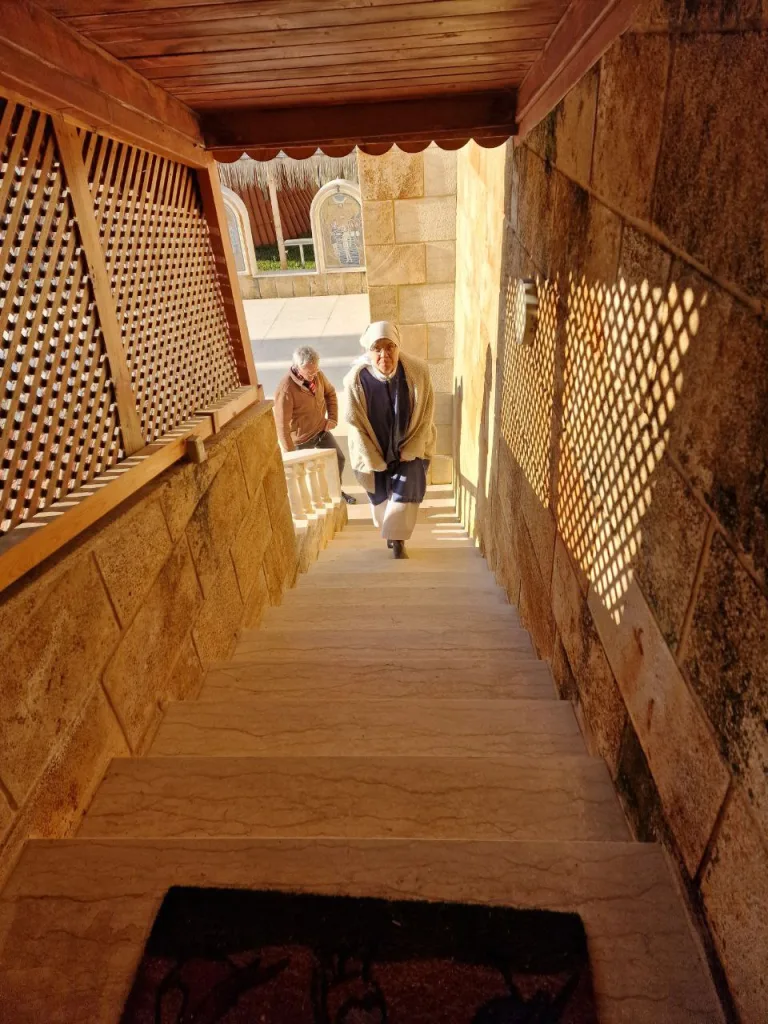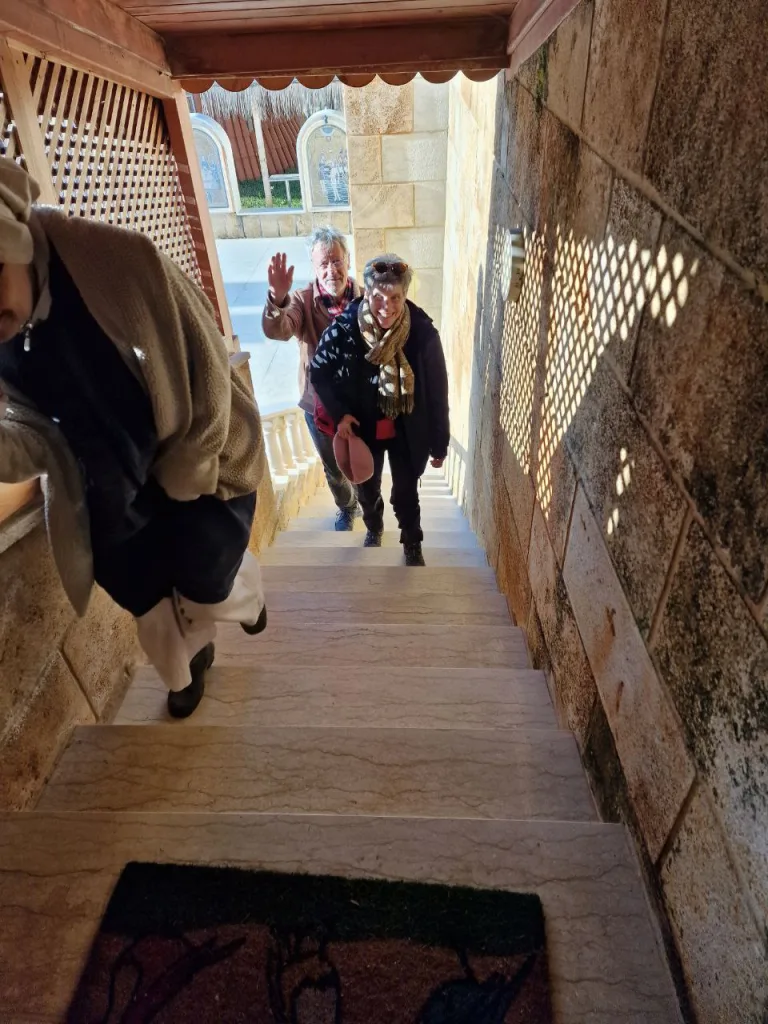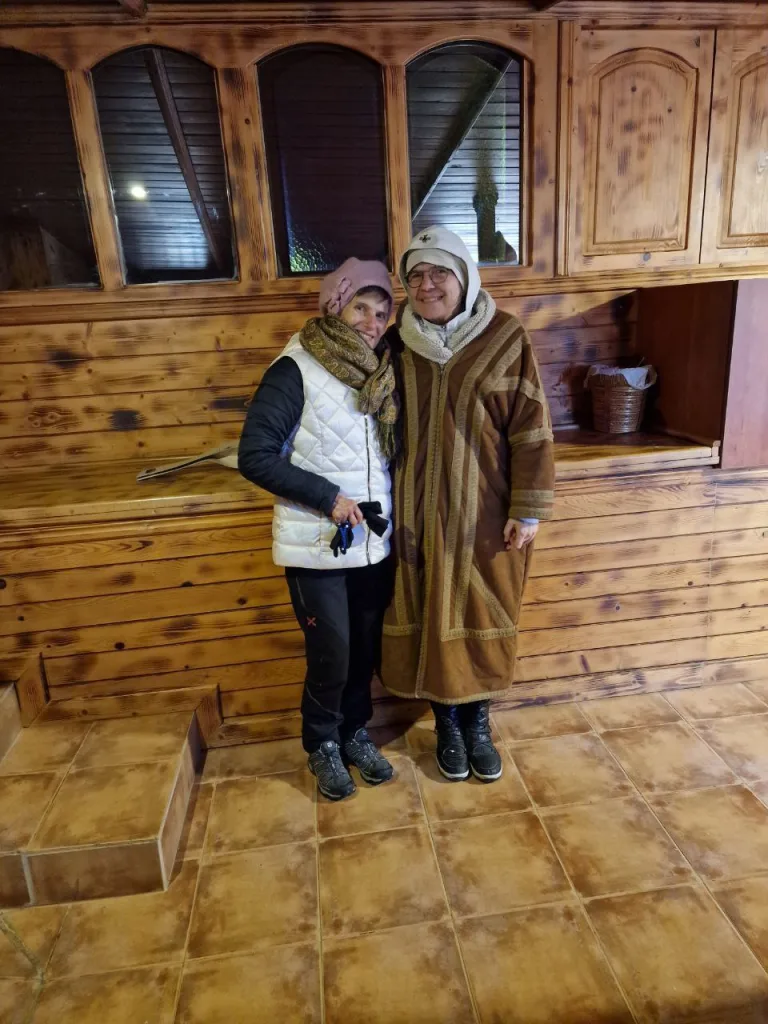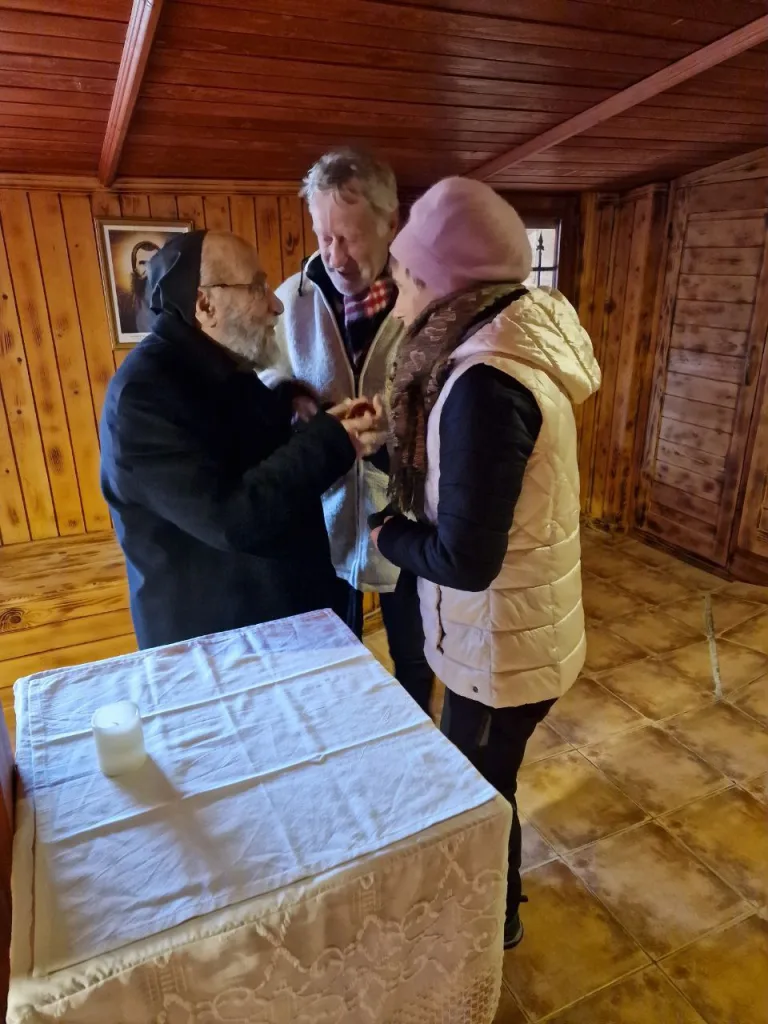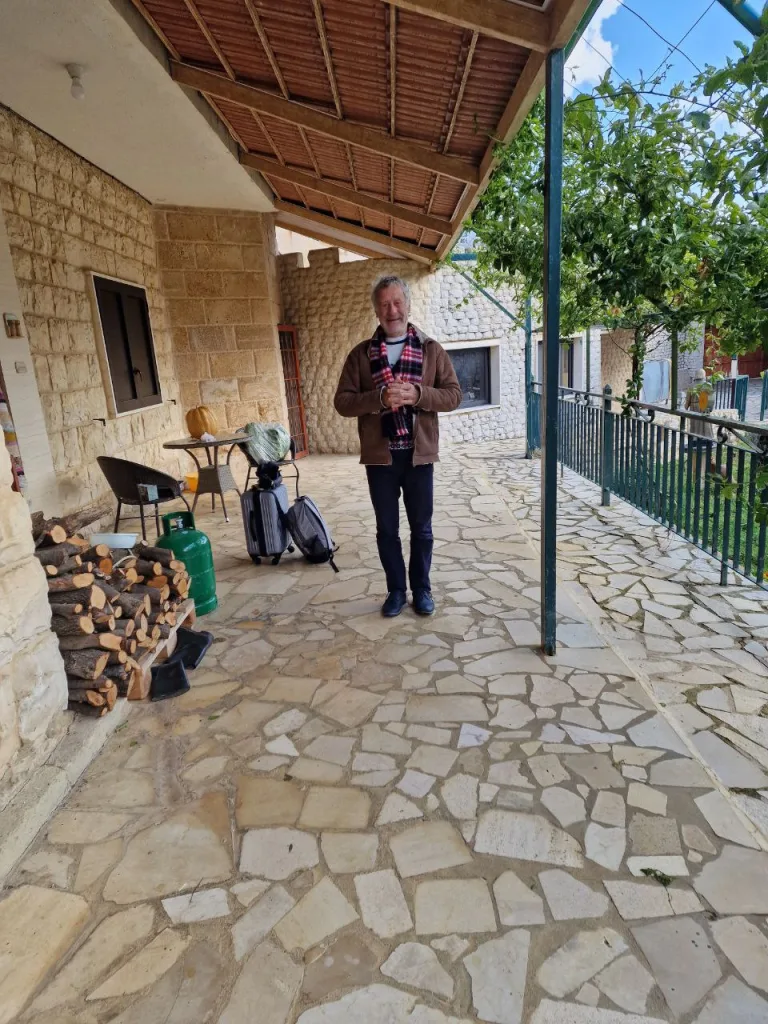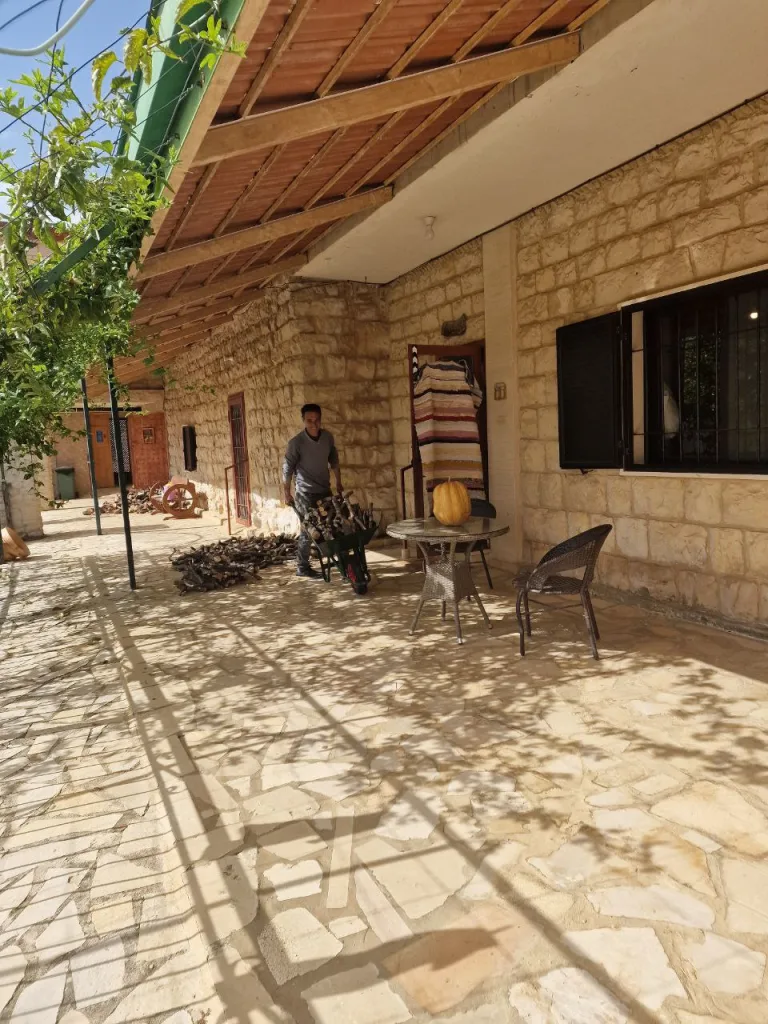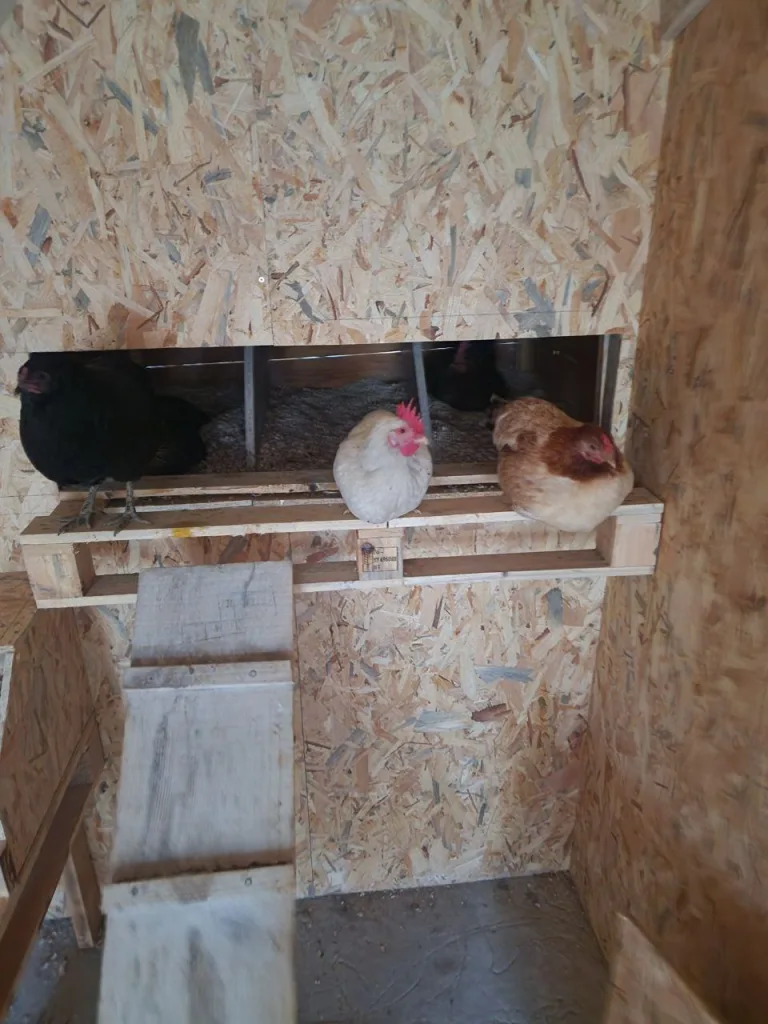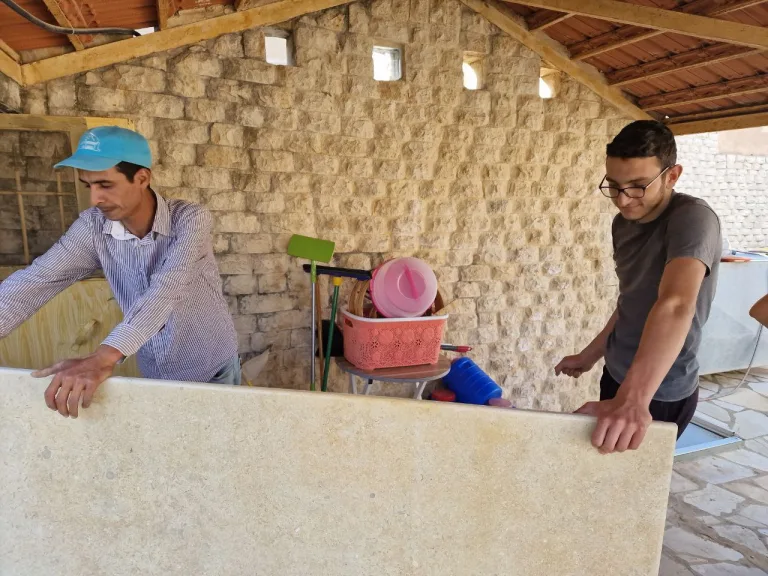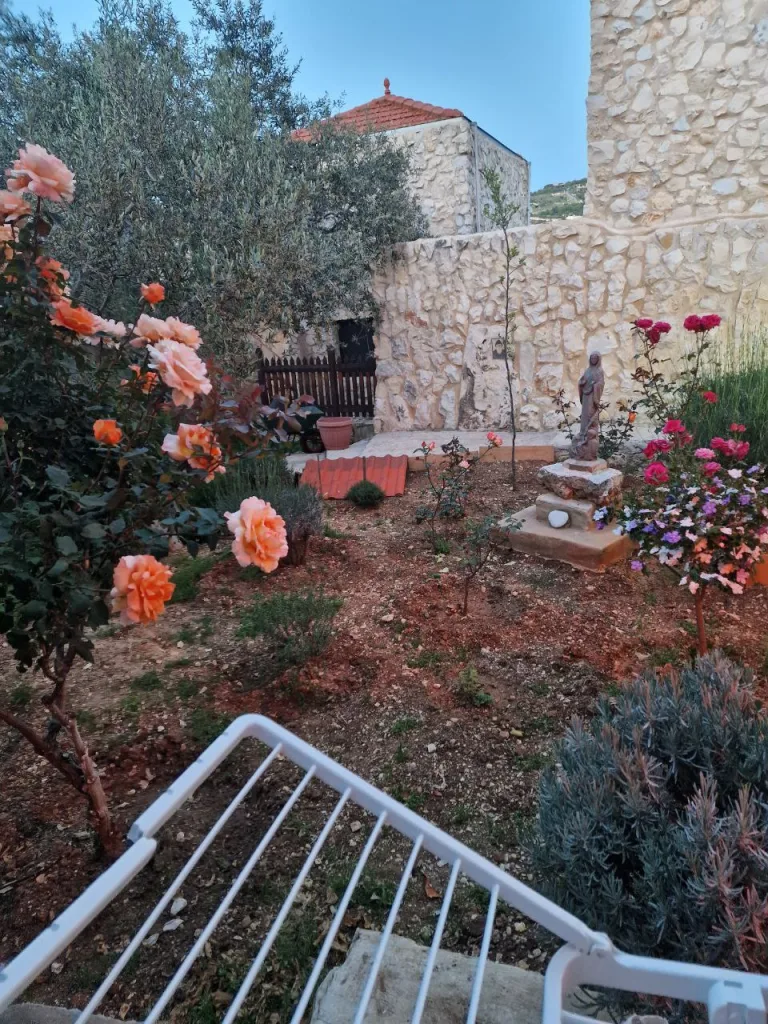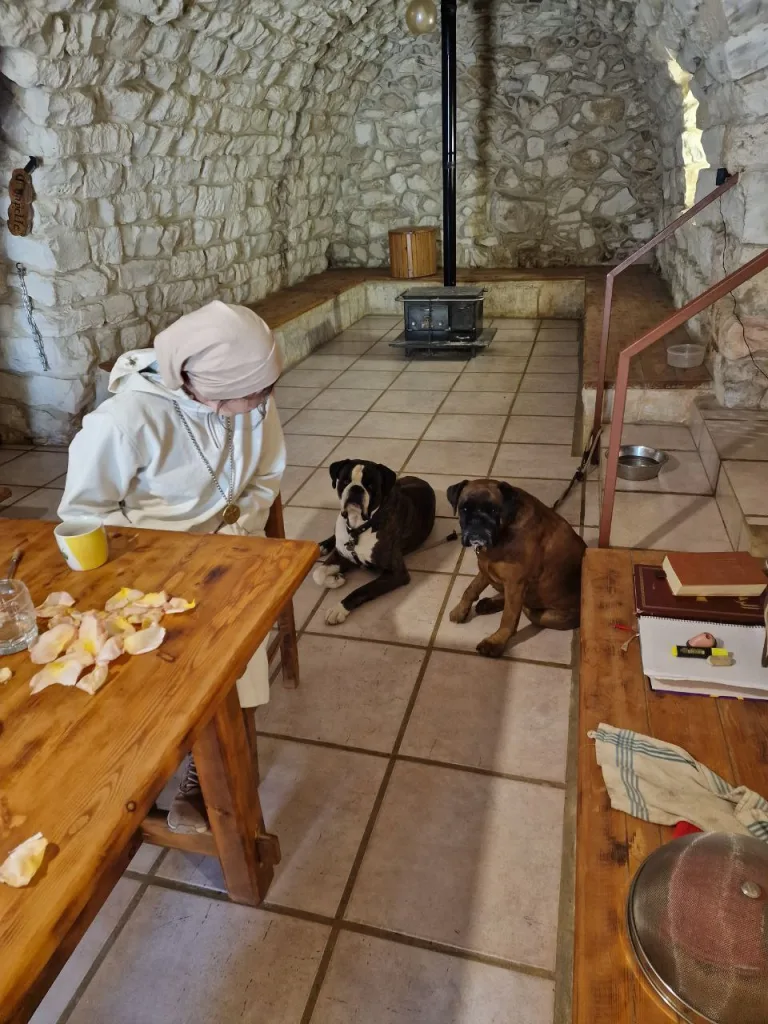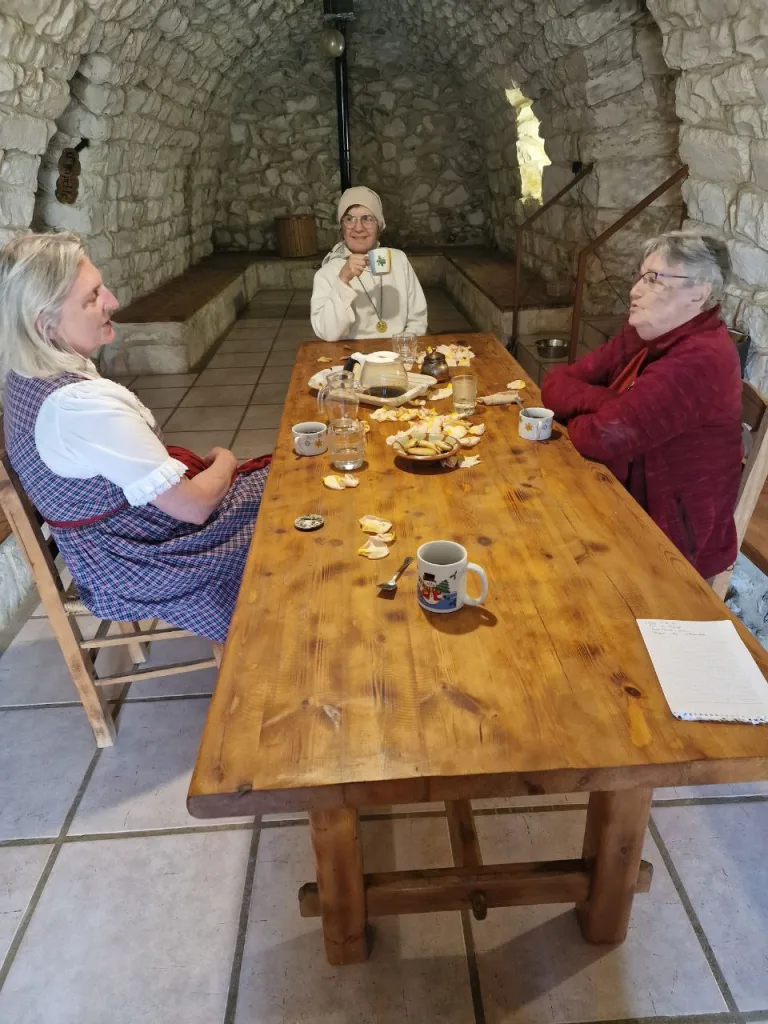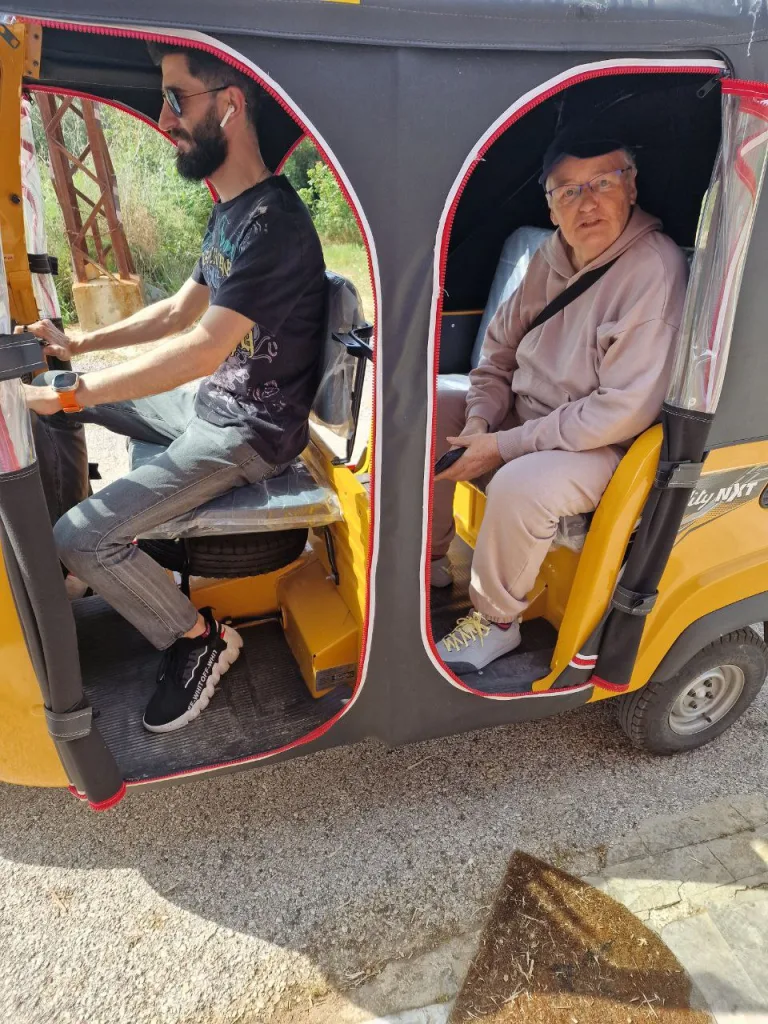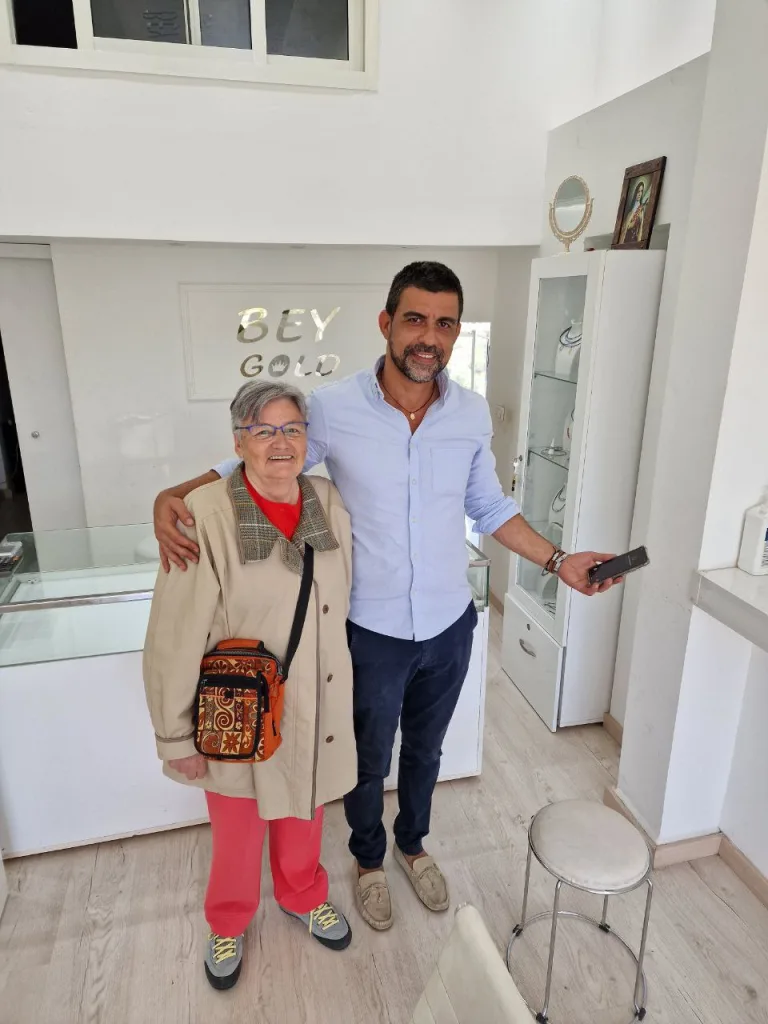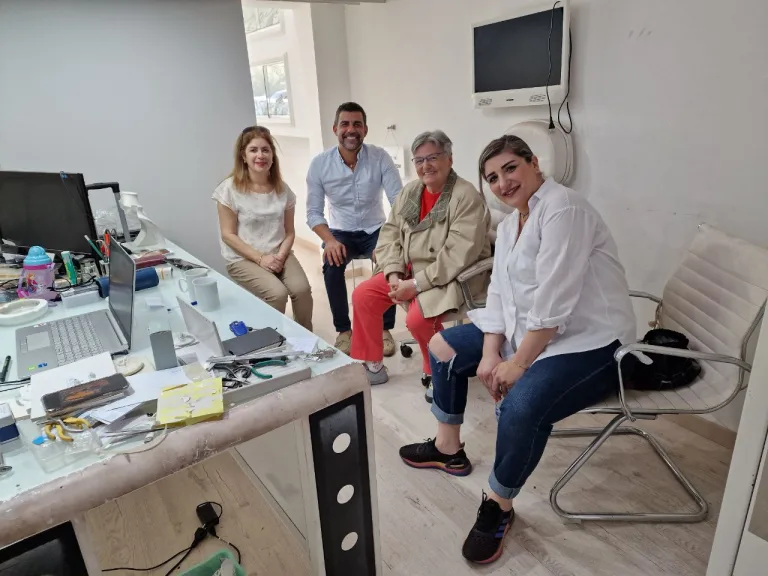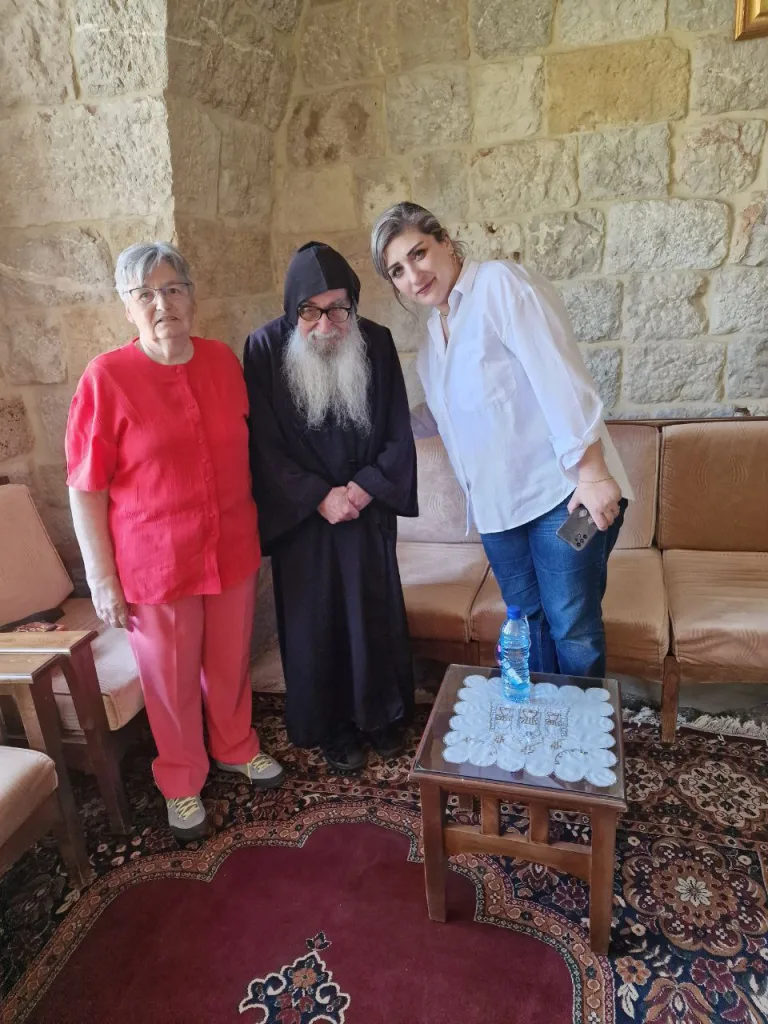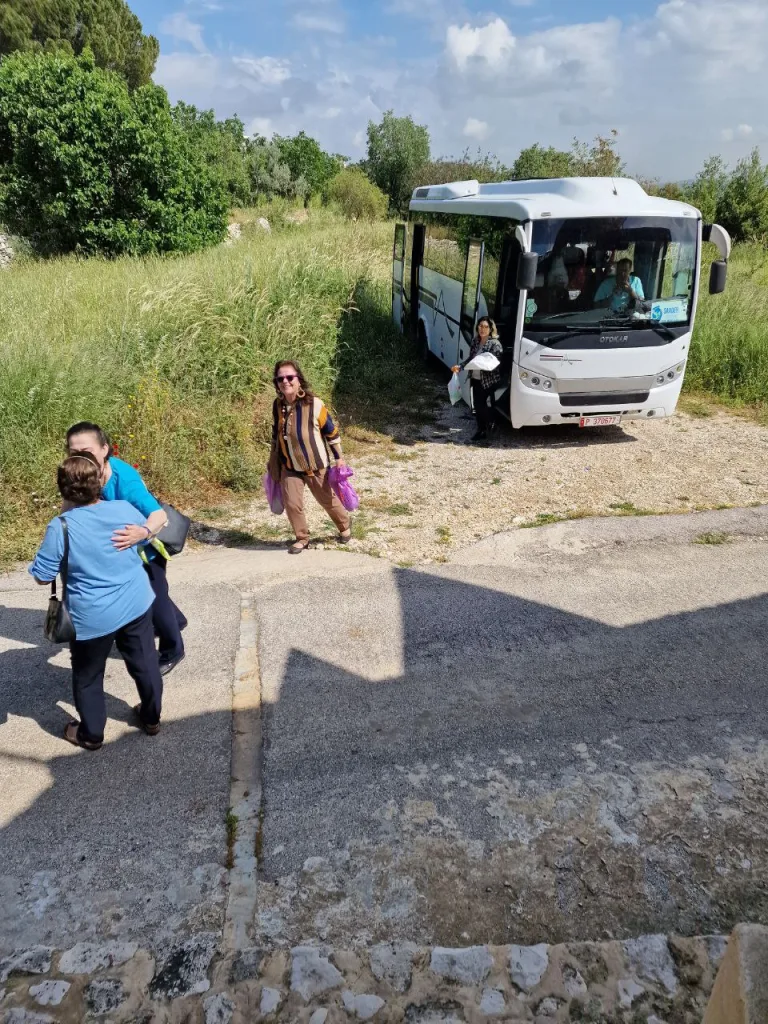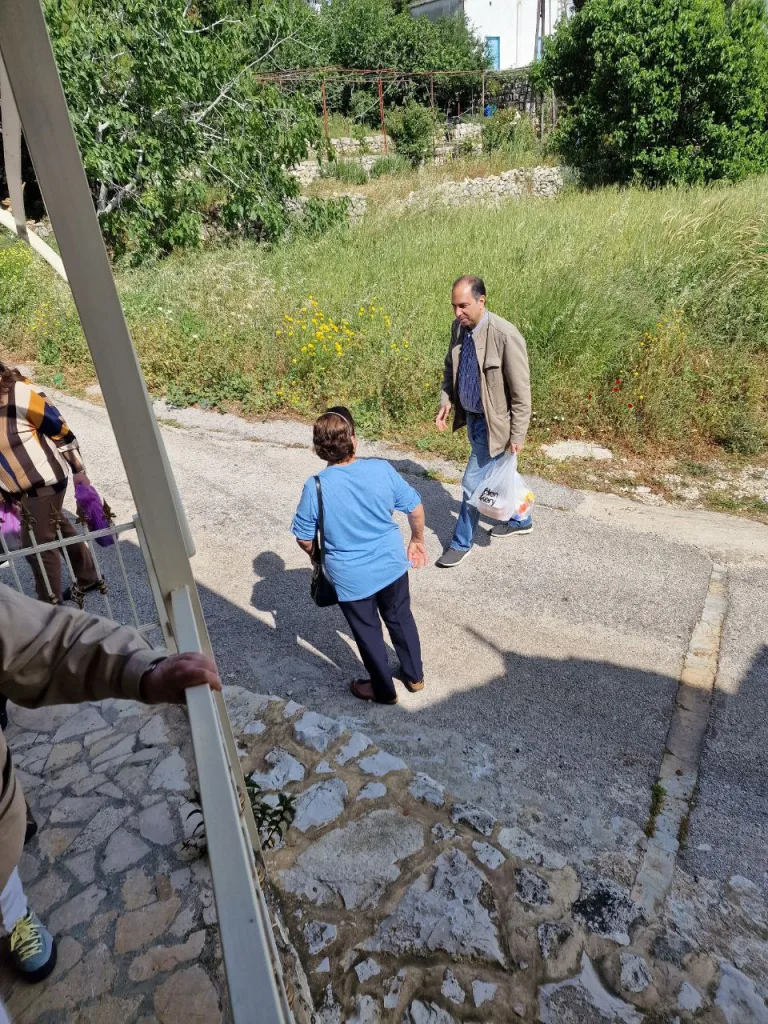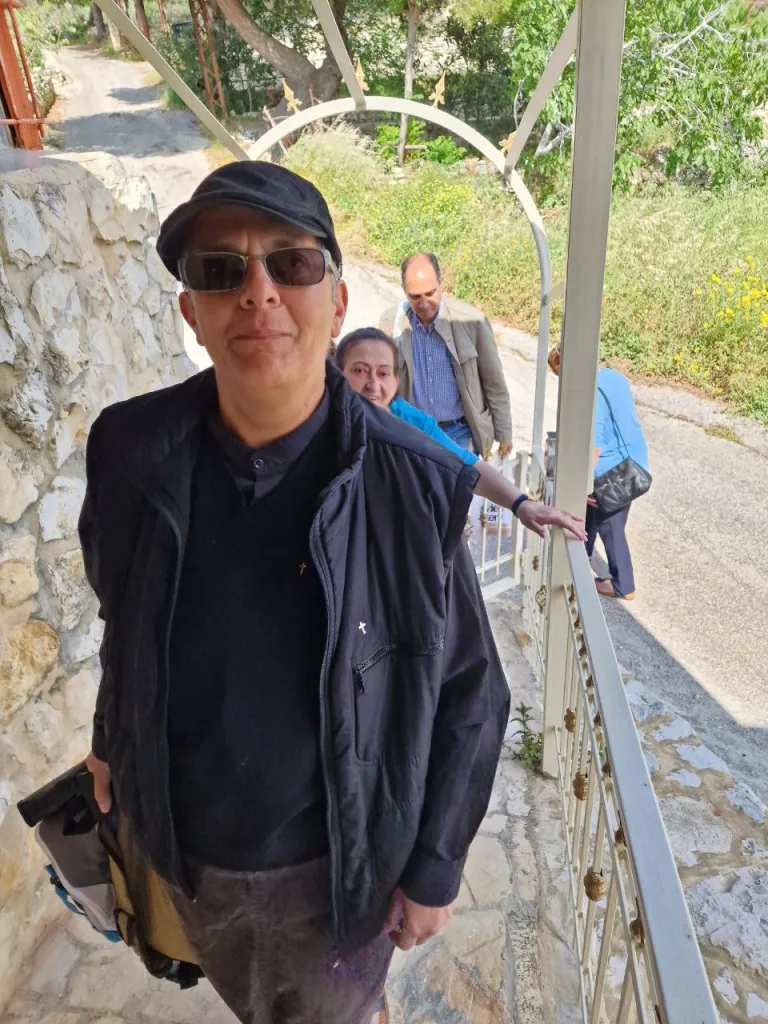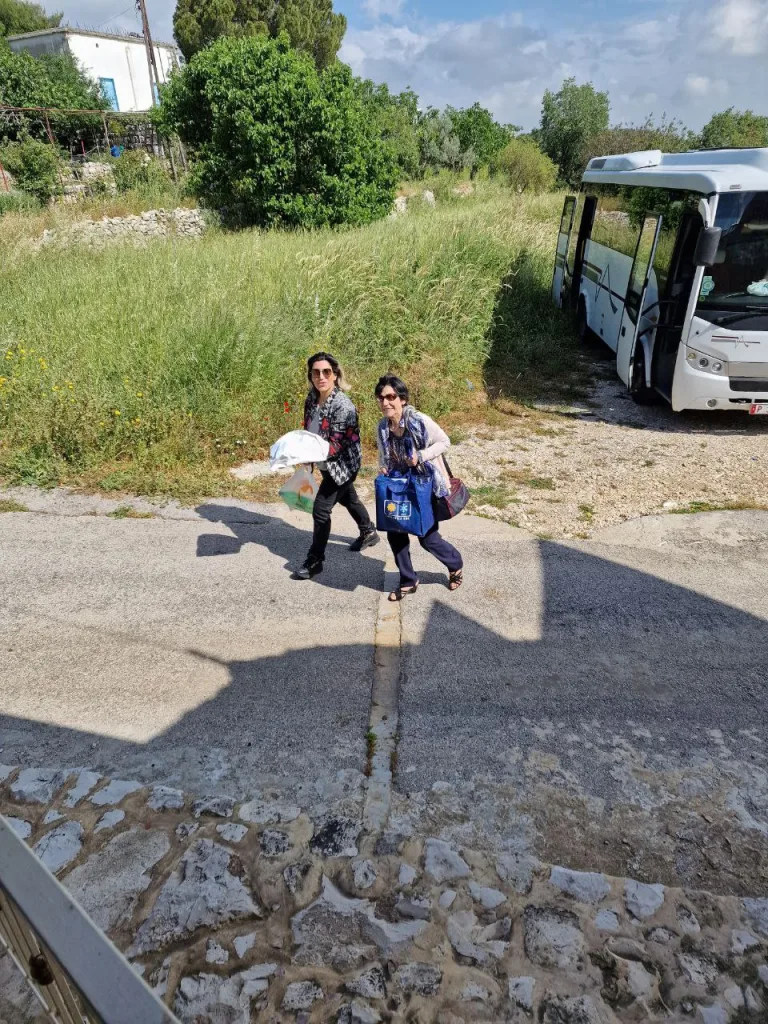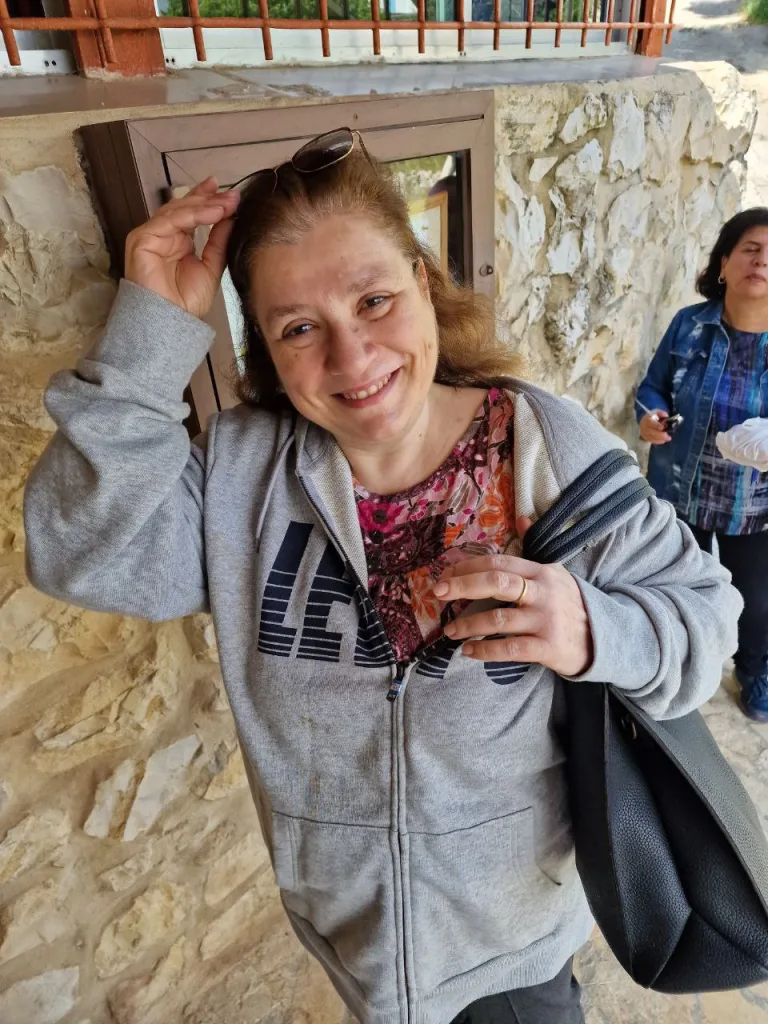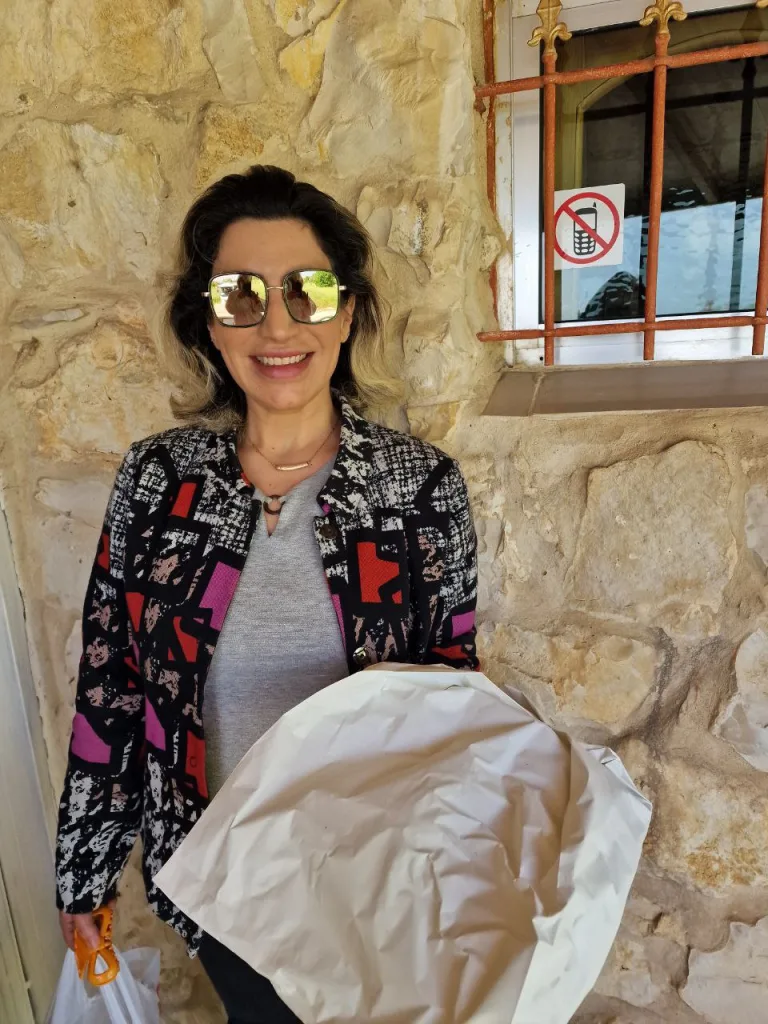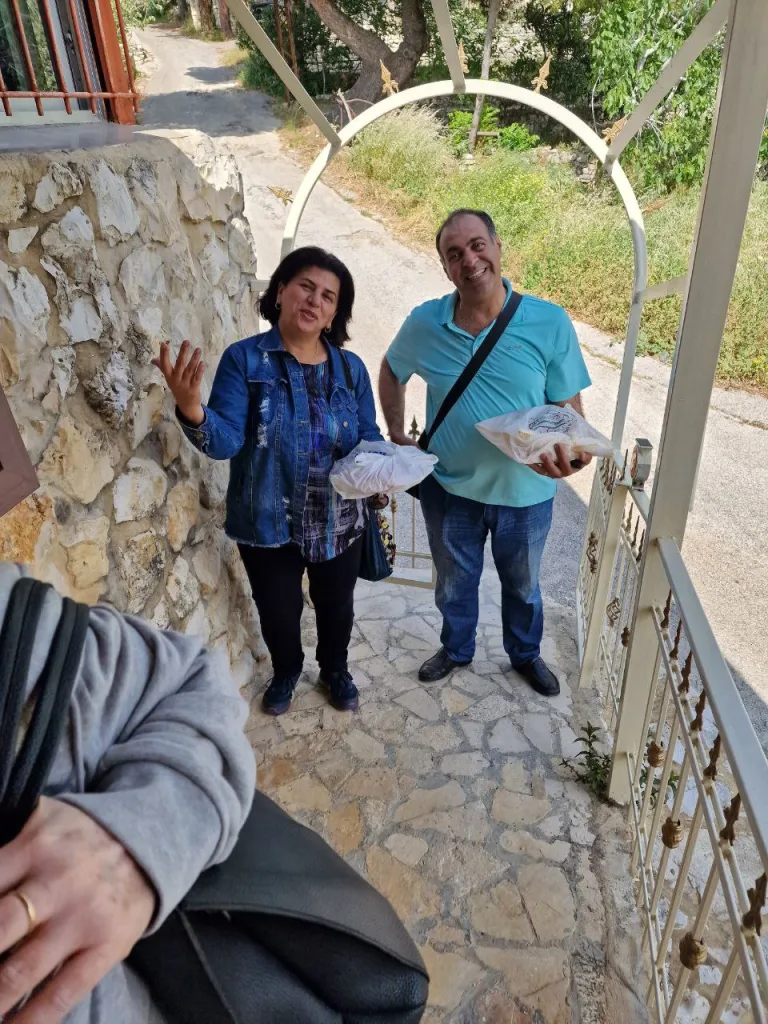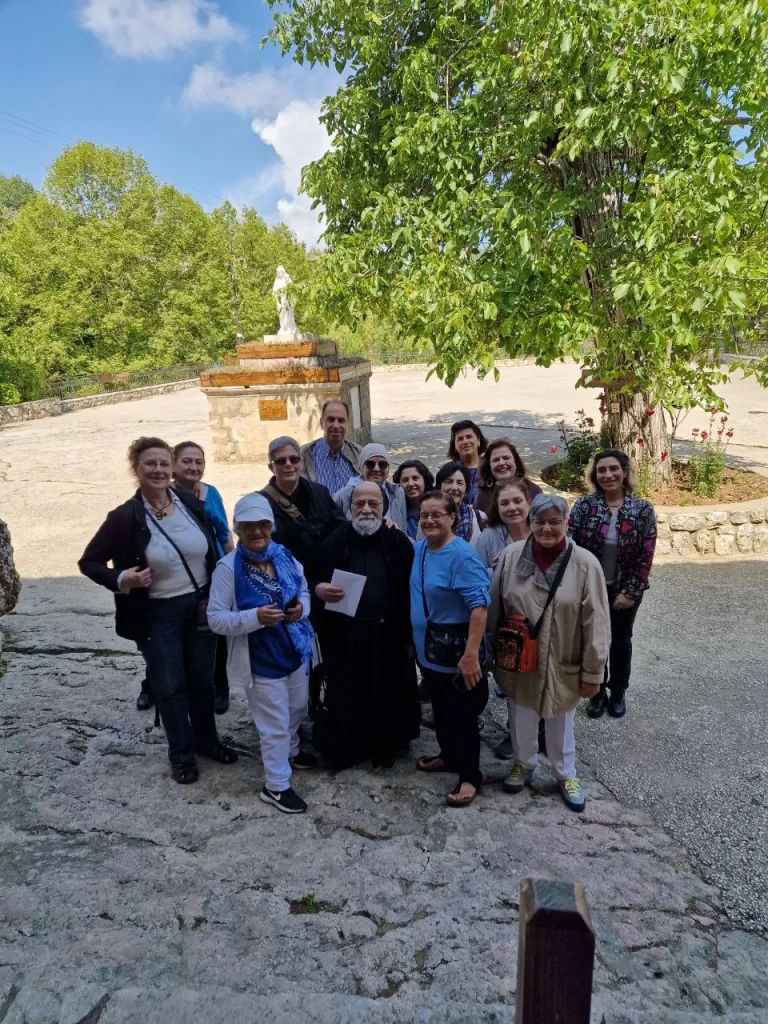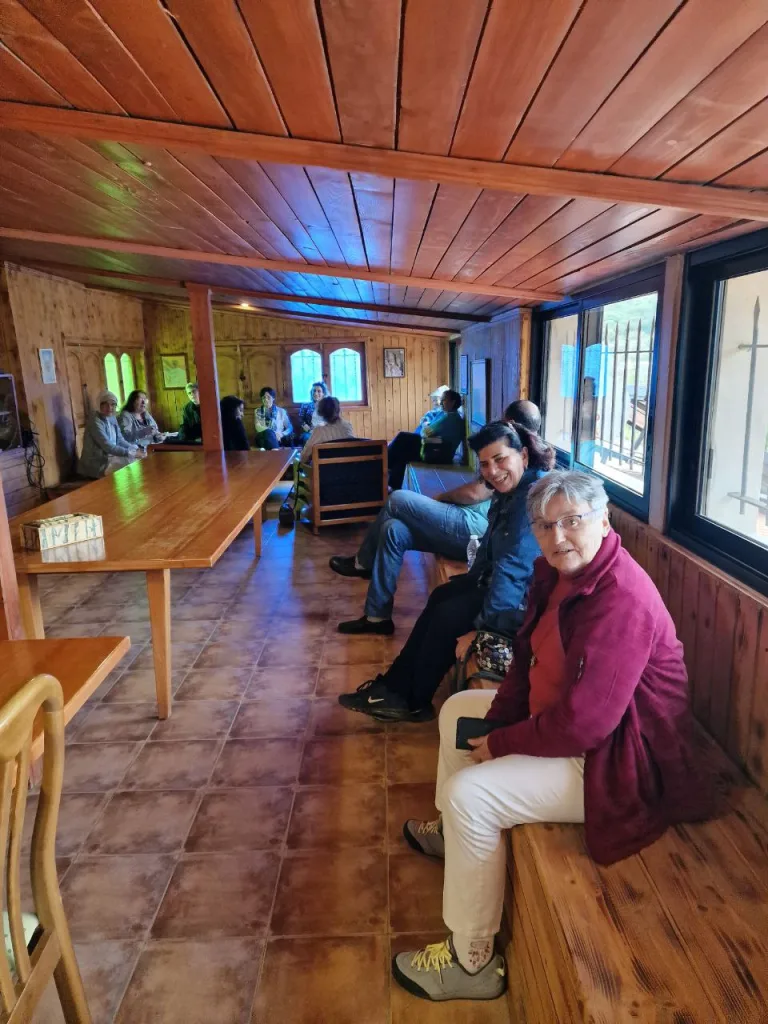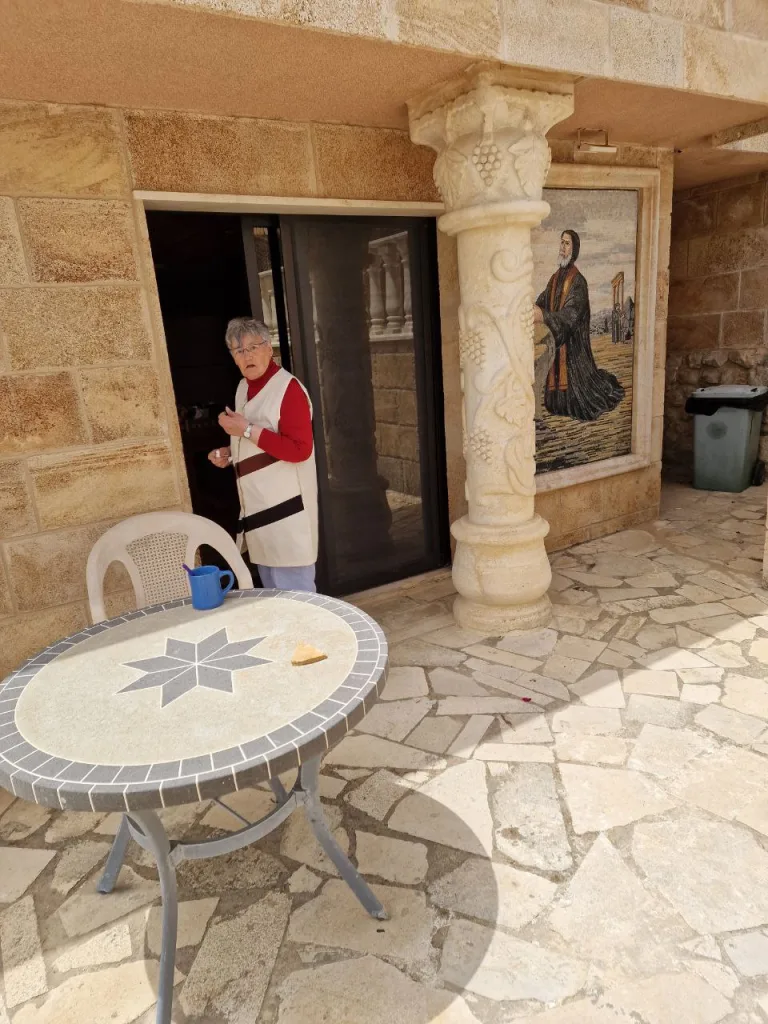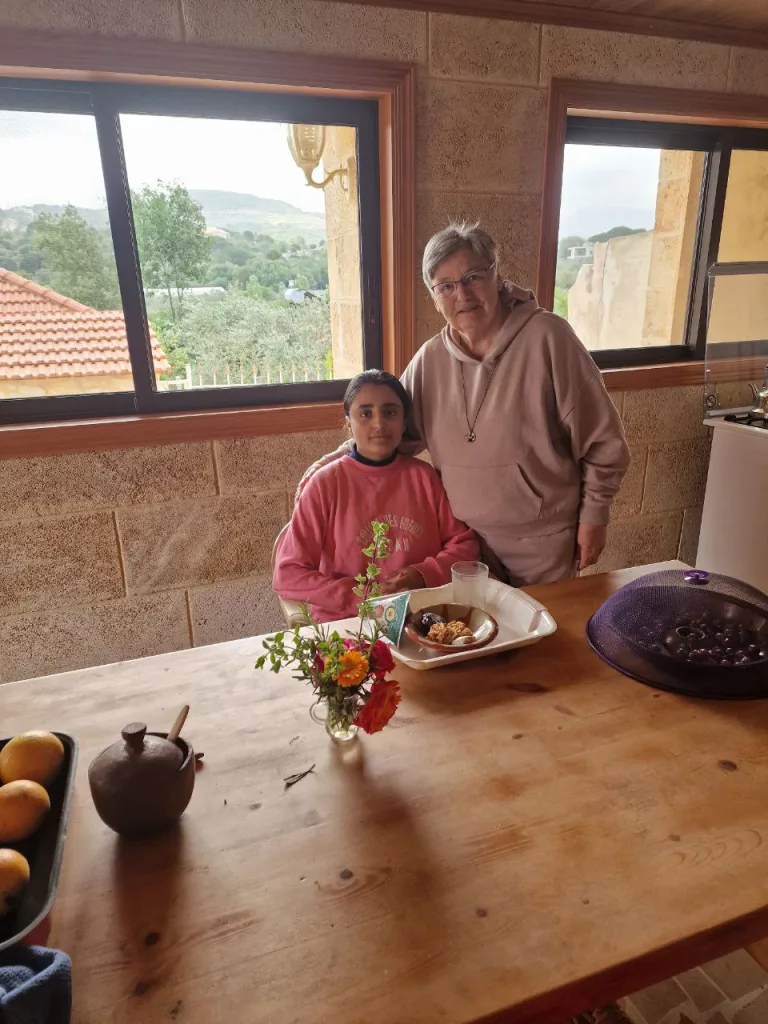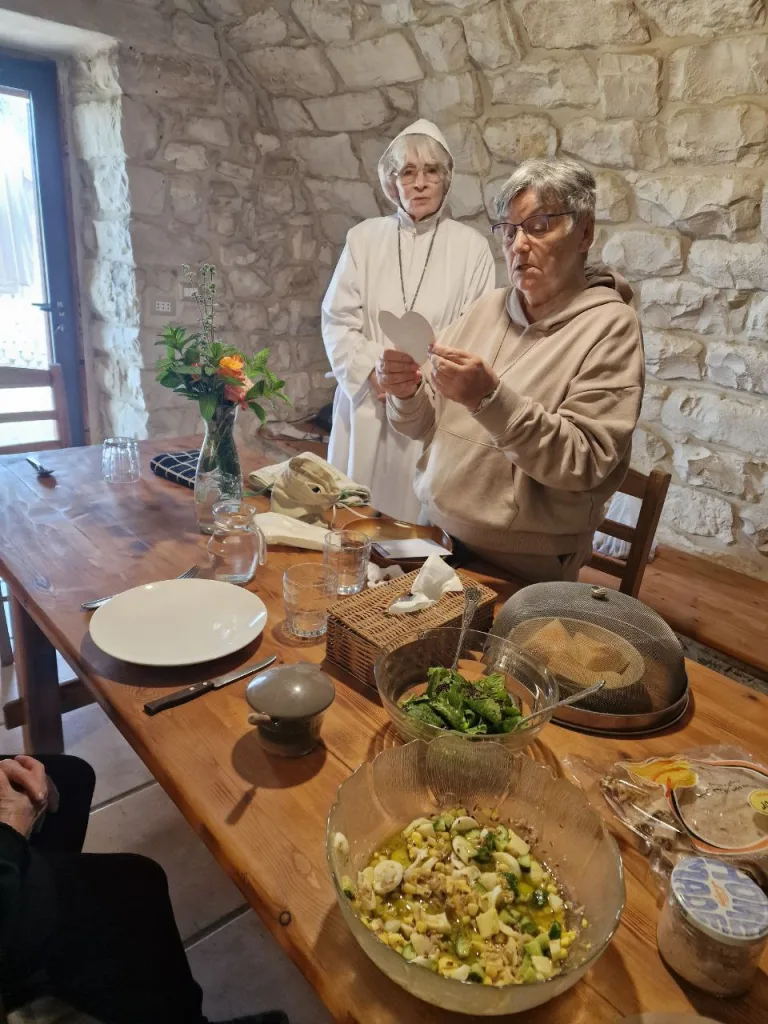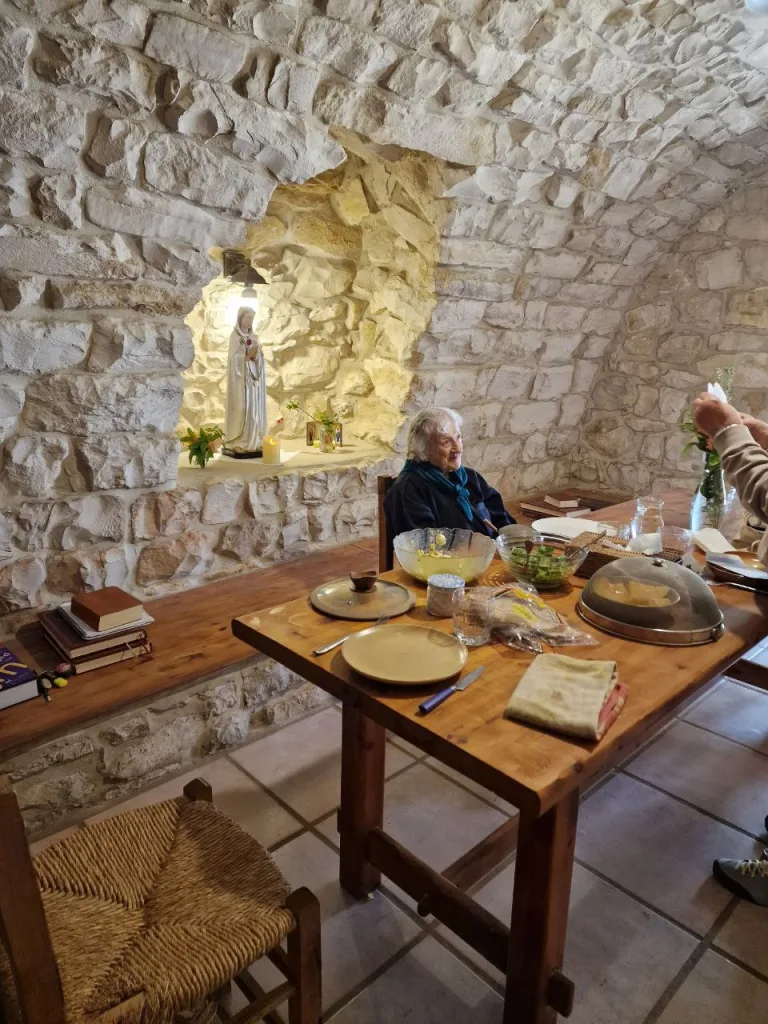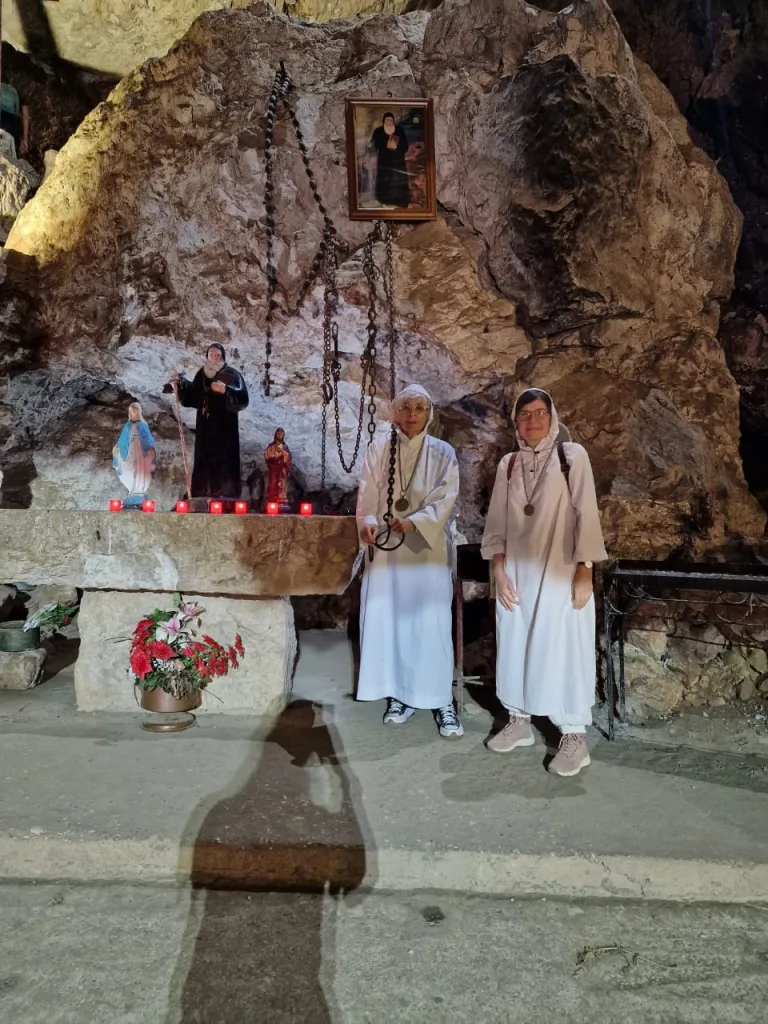Who Are We?
A MESSAGE FROM THE BISHOP OF BATROUN
MONSIGNOR MOUNIR KHAIRALLAH
(Source: Preface of the book: “The Hunger of the World written by Mother Brigitte”) – gathering in His image)

The history that binds me to Mother Brigitte May dates back to 1984, to that day of February 26th, when Brigitte received the revelation of our Lord Jesus Christ in her artist’s cellar-studio in Paris, Rue Lhomond, not far from the Church of Our Lady of Lebanon and the Church of Saint-Médard, where I was serving as a parish priest while completing my studies at the Catholic Institute and the Sorbonne.
She was seeking the absolute Love of the Father; it was then that Jesus revealed Himself to her, saying: “Brigitte, you were no longer there, but I was there; you will never leave Me; you will be a hermit.” Brigitte discovered that Jesus loved her personally as she was: “There was a complete revolution deep within me.” She felt the immense “healing tenderness of God the Father,” who was calling her to “infinite Love through His Son Jesus Christ” and healed her childhood wound. She did not know at the time that she would be led to Lebanon to live her vocation as a hermit, following the example of François de Chasteuil, the famous “hermit of Mount Lebanon,” who died in the Holy Valley of Qadisha in 1644. Neither she nor I knew that the Lord had reserved a common future for us in the service of the diocese of Batroun. I met Brigitte thanks to Sister Jeanne Claude Chamoun (Sister of the Congregation of the Maronite Holy Family), who was preparing a DEA in pedagogy at the Sorbonne and had asked me to be a member of her defense jury; she was the instrument and the first witness of Brigitte’s conversion.
Brigitte was invited by Sister Chamoun to come to Lebanon in July 1986 to discover the youth wounded by war, and while visiting the Holy Valley in the cave of Saint Anthony the Great, she heard a voice: “Brigitte, it is on this land that you will be a hermit”; it was Father Boulos Najem (Lebanese Missionary Fathers) who confirmed this call, and – against her will – Brigitte obeyed and left Paris to serve Lebanese youth at Saint Elie High School in Batroun through the association “Mission des Enfants du Cèdre,” which she founded in Paris at Saint Maurice in Switzerland, then in Beirut (dissolved in 1998). Her first spiritual father was the late General Abbot Emmanuel Khoury (Lebanese Maronite Order).
On July 13, 1986, Monsignor Paul Emile Saadé then newly ordained bishop of Batroun, called me to serve as his secretary and later as his Vicar General. I had already returned to Lebanon at the end of 1984 to the Maronite Patriarchal Seminary in Ghazir. I then reconnected with Brigitte in Batroun, where I became the pastor of the Cathedral starting in October 1991. Brigitte was guided in her missionary life by the Reverend Jesuit Father, the late Augustin Dupré La Tour, but she still felt the call to be a hermit. She embarked on a spiritual journey guided by the late General Abbot Jean Slim (Maronite Antonine Monks), and she took the three evangelical vows in the hands of the Apostolic Vicar in Lebanon, who recognized her as a hermit. However, given the requests from young women from France, Germany, and Lebanon to follow her on this path in her cave-hermitage in Toula, a quiet locality in the diocese of Batroun, she founded the “Abana (Our Father) Community.” After multiple challenges, she came to me expressing her desire to “become Maronite and introduce her Community into one of the Eastern Churches of the House of Antioch of Syriac tradition.” I suggested that she speak to Monsignor Paul Emile Saadé and seek his blessing to integrate her Community into the Maronite diocese of Batroun under the authority of its Bishop, which was immediately done. Monsignor Paul Emile Saadé recognized the new Institution on September 14, 2005, the feast of the Exaltation of the Holy Cross. He asked Sister Brigitte to “renounce her title of hermit to become a founder” and recognized her status as a consecrated person. He appointed me as the accompanying father, then designated Father Thomas Mouhanna (Lebanese Maronite Order) as spiritual father along with Sister Laurence Delacroix, co-founder.
We journeyed together for several years, working on the development of the Constitutions of the new Community, whose founding text proposes a Christocentric and cenobitic spirituality inspired “by the Holy Scriptures, the Magisterium of the Church, the Second Vatican Council, the Desert Fathers and Mothers, and the monks of the Syriac Churches of Antioch, especially Saint Charbel and Saint Rafqa.” It emphasizes its charism, characterized by “Solitude, Adoration, Silence, Abandonment, and Conversion,” in the tradition of the Syriac-Eastern Maronite mystic school. The orantes (praying members) are not called to flee the world – they welcome people for spiritual retreats or meetings – but to graft their lives onto Jesus Christ, the Son of God the Father, who gave us Salvation through His death on the Cross and His Resurrection.
On April 17, 2011, during Palm Sunday Mass, Monsignor Paul Emile Saadé officially recognized the canonical status “ad experimentum for three years” of the “Community of the Orantes of the Abana Laura.” He charged us with continuing our journey to “establish an ecclesial Community of eparchial right, listening to the Breath of the Holy Spirit with the aim of becoming in Jesus Christ perpetual adoration of the Father, an offering of the entire being, interceding for Lebanon and the world.”On February 25, 2012, I was ordained Bishop of Batroun to succeed Monsignor Paul Emile Saadé; and the next day, February 26, I officially entered the diocese, with a special thought for the Community of the Orantes of the Abana Laura and for its founder, 28 years to the day after her conversion!
I therefore promised to complete the drafting of the Constitutions to ensure they conformed to the Code of Canon Law of the Eastern Churches (CCEO), to recognize the Community of eparchial right, and to integrate it into the ensemble of Congregations operating within the diocese.
On October 26, 2013, Mother Brigitte was invited as a member to the opening of the diocesan Synod, which I presided over in the presence of the one hundred eighty-six clerical and lay members who will journey together for two years with the goal of renewing and sanctifying themselves through Christ, following Saint Maron, Saint John Maron, and all our saints.
May the Lord guide our steps on the paths of Peace so that we may accomplish His will among our brothers and sisters, each according to the charism given to them by the Holy Spirit.
THE FOUNDING MOTHER: BRIGITTE MAY
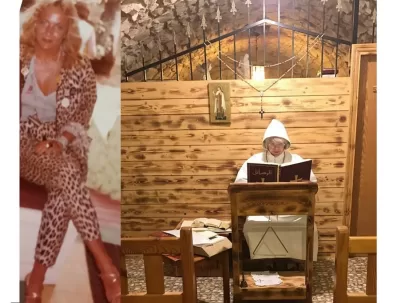
On February 26, 1984 the founder Encountered Jesus Christ in her artist’s cellar at 35 Rue Lhomond in Paris (5th arrondissement).
He placed His hand on her head and said:“Brigitte, you were no longer there, but I was there. You will never leave Me; you will be a hermit.”
Thirty-nine years after the Word of Jesus during her night of fire, it has become flesh after a long journey of faith!
THE CO-FOUNDER: LAURENCE DELACROIX
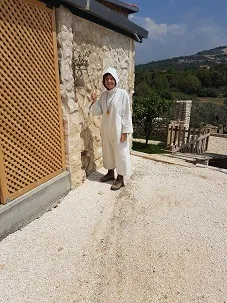

F. Thomas Mouhanna (LMO)
HERMITS APOSTLES
A Word from the Spiritual Father of the Community of Orantes-Apostles:(Preface of the trilogy “Rendez-vous at the Well of the Lovers…”)
“Here is this little text that I, Father Thomas Mouhanna (LMO), wrote at the request of my dear mother Amma Brigitte so that it would become – with my photo at the top of the first page elevating the Holy Host – the general preface of the Trilogy that Amma wrote and is currently printing and publishing.
What do I have to say about this? What do I have to say, especially to you, dear reader, regarding this Trilogy?
Allow me first to draw your attention to the title of the Trilogy: ‘Rendez-vous at the Well of the Lovers.’ And then to the respective titles of the three booklets, which are as follows: VIII ‘The Triangular Stone of the Well,’ IX ‘Path of the Lovers of the Word,’ X ‘The Well of the Lovers.’
Secondly, what can I say about the content? Can I draw out a number of ideas that would summarize it? At first, I thought about this as one usually does when writing a preface, but it seemed impossible to me! Because reading these reflections enriched me not with communicable ideas but with new, original, and multifaceted impressions, leading me into a world different from ours and allowing me to simultaneously see the supernatural in the natural, the Divine in the human, the Invisible in the visible…
All this means that these texts stem from a deep spiritual experience, which prompts me to invite you to read and reread them to also draw unprecedented impressions in our most serious ordinary experiences.
Thirdly, this curious and unusual state of affairs produced by reading the three booklets made me reflect on the name definitively chosen and adopted by Amma Brigitte and Sister Laurence Delacroix: ‘Hermit Apostle.’
I felt that this name made the ‘impressions’ described above more accessible, so let us try to pause on it and draw out the essentials:
a- A serious question emerges: does such a name not reveal a certain paradox between the classical and canonical conception of active religious life and contemplative life? This is not my concern here because what I simply want to discern in this new name is the real and active factor that would characterize the said-writings, evoking such impressions.
b- Is this factor not, on the one hand, the conscious and free decision to respond to Christ’s call and to follow Him radically, made by the two founders who thus became hermits? And is this same factor not, on the other hand, the direct consequence of their clear decision and their state of hermits in the continuity of the Syriac Tradition ‘a solitude of communion’ leading a semi-eremitic life at the Abana-Our Father Laura with a Christocentric spirituality that makes each of them ‘an apostle’ through the testimony of their life as disciples of Jesus: a simple life in fraternal hospitality to everyone and through sincere and authentic spiritual counsel they give to those who come to the Laura and ask them?
c- This link between eremitism and apostolate finds its foundation in the hermit’s love for Christ, which can be analogously compared to Christ’s Love for His Father, , allowing Christ to consider the hermit as ‘His envoy’.I would say, in conclusion, that by imitating Jesus Christ – the first Hermit Apostle sent by the Father to our world – the sisters directly called by Him to the Abana-Our Father Laura thus allow Jesus Christ our Savior to consider each of them as ‘His envoy’ to bear witness, like Him and with Him, of the Father to our deeply wounded humanity!”
Where Are We?

In the Diocese of Batroun, in Toula, the northern gateway to the Holy Valley
Toula is a modest Lebanese village, somewhat like Nazareth in the time of Jesus: a quiet and rather poor village, ideal for leading a hermitic life. It is this village of Toula that God chose to mysteriously establish His little Abana-Our Father Laura: a Great Mystery!
Toula (Arabic: تولا) is a village in the Batroun district in the North Governorate of Lebanon, located 15 km from Batroun. It is situated at an altitude ranging from 460 meters at its lowest point to 760 meters at its highest. It is known for its olive oil and figs. The inhabitants are Christians. Its parish church, St-Domice (Mar Doumit), dates back to 1270, was restored in 1921, and has beautiful stone vaults inside. There is also the Church of Slayyeb and that of Mar Aabda.
Our Constitutions
Constitutions of the Community of Orantes Apostles of the Abana-Our Father Laura
Toula-BATROUN, LEBANON August 6, 2019“From the very origins of the Church, there were men and women who wanted to follow Christ more freely and imitate Him more faithfully by practicing the evangelical counsels, each in their own way, leading a life consecrated to God. Many among them, driven by the Holy Spirit, lived in solitude or founded religious families, which the Church readily welcomed and approved with her authority. From there, a marvelous variety of religious societies providentially developed…”[1]
“The desert and the parched land shall rejoice! The wilderness shall exult and bloom like a rose; it shall be covered with wildflowers, and it shall exult and shout for joy! The glory of Lebanon shall be given to it, the splendor of Carmel and Sharon. They shall see the glory of the Lord, the splendor of our God.”[2]
In 1997, His Holiness Pope John Paul II expressed his concerns about the situation of the consecrated in Lebanon. He invited the religious men and women in Lebanon to “truthfully analyze their ways of life and their ways of witnessing to the Gospel and fulfilling the missions entrusted to them. They will thus ensure that they remain faithful to the original intuitions of their founders and that they remain, for the people of their time, witnesses of Christ and examples of Christian life through community life and the practice of the evangelical counsels of poverty, chastity, and obedience. The Lord indeed commands us to care for those who falter and to seek the profit of others before what pleases us (Cf.Tt 212). Moreover, their mission requires great fidelity to the ideal of all consecrated life and the specific orientation of the founders, as well as a creative spirit to respond to the expectations of people and to address the specific needs of the Church.[3]».
The tree of life or Constitutions of the Community of Orantes-Apostles of the Abana-Our Father Laura takes shape both from the spiritual experience of the founder Brigitte May and from that of Laurence Delacroix, the first disciple who came in 2002 to live the hermitic life with Sister Brigitte.
This personal foundation began to take on a canonical structure with the “ad experimentum” recognition of a House of Prayer [4],on September 14, 2005, by His Excellency Monsignor Paul Emile Saadé, Bishop of Batroun; then by the second act of recognition of the Community called “Community of the Orantes of the Abana Laura” on April 17, 2011, by the same Monsignor Saadé. Finally, by the canonical recognition of the “Constitutions of the Community of Orantes-Apostles of the Abana-Our Father Laura” on August 6, 2019, by His Excellency Monsignor Mounir Khairallah, Bishop of Batroun.
1- The Experience of Brigitte May, Founder
In 1984, during a night of fire in Paris, God illuminated the founder in Christ: “Brigitte, you were no longer there, but I was there; you will never leave Me; you will be a hermit.” She then discovered the immense healing tenderness of the Father, who called her to infinite Love, to Universal Reconciliation, and Communion.
In July 1986, she was led to Lebanon following fortuitous yet prolonged contacts with Eastern religious men and women. During this first trip, Brigitte visited the heart of the Lebanese mountains, deep within the Holy Valley, the Bethlehem of Lebanon, fragrant with virtue and heroism. While visiting one of these caves, that of Saint Anthony the Great, Brigitte believed she heard – for the second time – the voice of the Lord: “Brigitte, it is on this land that you will be a hermit.” However, she did not want to stay in Lebanon, as she had established a mission in France with her students from Saint Thomas Aquinas High School in Paris, Rue de Grenelle, for young people lost along the banks of Notre Dame de Paris. Nevertheless, since this call remained in her mind, she decided to meet Father Boulos Najem, Superior General of the Lebanese Missionaries, whom she knew well. As soon as she arrived near him at the Apostles’ College, the father, seeing her, dropped his newspaper, got up, and placed his hand on her head, saying: “Brigitte, you here? I hope you will be a hermit on this land.” The same words she heard in the cave! At that moment, Brigitte was astonished and recounted her experience in the cave, and the father, stunned, immediately confirmed the Lord’s call. No sooner said than done, in September of the same year, Brigitte resigned from her teaching position in Paris to join Lebanon.
Her spiritual father, Emmanuel Khoury (Lebanese Maronite Order), with whom she spent a week of prayer and reflection at the Monastery of Saint Rafqa, explained to her that to be a hermit, she would have to live near a convent with nuns for at least eight to ten years; so she sought to implement this “light” through increasingly profound prayer and her teaching apostolate with the nuns of the Congregation of the Maronite Sisters of the Holy Family and by serving the poor and the wounded during the painful events that Lebanon experienced (1986-1993).
In July 1993, she began embracing the hermitic life in a small stone cellar in Toula-Batroun with the permission of the Apostolic Vicar for the Latins in Lebanon, His Excellency Monsignor Paul Bassim. On February 26, 1996, she took her private vows as a hermit[5] in the hands of Reverend Father Augustin Dupré La Tour (SJ) – delegated by Monsignor Paul Bassim – and in the presence of Monsignor Charles Molette[6], during a Mass celebrated in Toula. It was then an experience of maturation, often sown with harsh and incomprehensible trials, that led her to make her three public vows[7] on February 2, 2001, before the Apostolic Vicar for the Latins in Lebanon, His Excellency Monsignor Paul Dahdah.
Her private vows and public consecration made her a person consecrated to the hermitic life. This is why, starting in 2002, people began to present themselves to her, confiding in her their feeling of being called to a life similar to hers. She could not refuse them this spiritual help, and they gradually shared her life of prayer. This unforeseen evolution led her to contact His Excellency Monsignor Paul Émile Saadé, Bishop of Batroun, for advice and discernment following Monsignor Paul Dahdah’s lack of understanding. Monsignor Paul Émile Saadé told her: “Sister Brigitte, I will not let you leave my diocese; you are a grace of prayer for Lebanon and beyond. You can bring your exiled daughters back under my responsibility.”[8]
This dialogue led, with Monsignor Paul Dahdah’s benevolent authorization, to her belonging to the Maronite Church, which introduced the Community of Orantes-Apostles of the Abana-Our Father Laura into one of the Eastern Churches of the House of Antioch of Syriac tradition within the Maronite Diocese of Batroun under the authority of its bishop, Monsignor Paul Emile Saadé. She then asked Mr. Toufic Ghorayeb to transfer the title of ownership of the “Toula cave” to Monsignor Mounir Khairallah, then Vicar General. He was appointed “Father Accompanist for the good functioning of the House.”
2 – The Experience of Laurence Delacroix, Co-Founder
In 1994, Laurence attended one of the life testimonies of the founder in Angers, where she discovered that she was personally loved by Christ, who revealed to her the love of the Father she had lost and was searching for.
Laurence returned to the church, where gradually, Christ-the-Offering healed her internally; she sought God’s plan in her life: she received a locution calling her to come to Lebanon in 2002 to pray near – as she would say – “this little hermit, Sister Brigitte,” after six years of silence between them. Father Jean Slim, an Antonine monk officially appointed by Monsignor Paul Dahdah to be with Sister Brigitte and a witness to her consecration, agreed that she should come for a discernment retreat of fifteen days (April 17, 2002), then a second retreat of three weeks (December 2002), and then six months (July 23, 2003). During a Mass celebrated by Fathers Jean Slim and Augustin Dupré La Tour on July 25, 2003, Laurence made the private offering of her entire being as a “regardante” to the hermitic life. On February 26, 2004, Laurence took the habit and made her private commitment as a novice hermit during a Mass celebrated by Father Jean Slim, followed by four painful exiles that confirmed Laurence as co-founder of the Community.
At the Abana House of Prayer, Laurence followed a strict rule as demanding as the classical rule required for the novitiate; under the guidance of the hermit Sister Brigitte and Father Jean Slim, she received everything necessary to devote herself to the hermitic life, with the consent of Bishop Paul Émile Saadé.
3 – The Providential Appointment of Father Thomas Mouhanna
His Excellency Monsignor Paul Émile Saadé officially appointed Father Thomas Mouhanna (Lebanese Maronite Order) as the Spiritual Father of the Community in June 2008, following the sudden passing of Father Jean Slim. After some time of observation, Father Thomas said to the hermit Sister Brigitte in the presence of Sister Laurence: “What is happening here is very serious, it is eschatological; you must write the Constitutions. You may often be misunderstood, but continue with courage and remain in Toula; God Himself will accomplish your persistent effort.” Feeling so poor, they obeyed in trembling. After praying for a long time, they decided to establish a semi-eremitic Institution, responding to God’s Will as manifested directly to Sister Brigitte and indirectly to Laurence.
4 – The Decisive Intervention of the Ordinary of the Place, Monsignor Mounir Khairallah
Having become the Bishop of Batroun, succeeding Monsignor Paul Émile Saadé on February 25, 2012, His Excellency Monsignor Mounir Khairallah confirmed Father Thomas Mouhanna in his role as Spiritual Father and asked him to review the Constitutions with Sister Brigitte and Sister Laurence in light of the long experience lived so far and in reference to the Canon Law of the Eastern Catholic Churches. He entrusted Father Pierre Tanios, the canonist of the Diocese of Batroun, with offering his canonical advice for the drafting of the articles. He then appointed Monsignor Boutros Khalil, Vicar General of the Diocese and canonist, as the Father Accompanist of the Community and tasked him with reviewing with the Community the already drafted canons.
After long and hard work and a collective review in the presence of the Ordinary of the Place, Monsignor Mounir Khairallah signed the canonical recognition of the “Constitutions of the Community of Orantes-Apostles of the Abana-Our Father Laura” on August 6, 2019, during a Mass celebrated at the Abana.
- [1] Vatican II Council, Decree “Perfectae Caritatis” No. 1
- [2] Isaiah 35:1
- [3] Apostolic Exhortation “A New Hope for Lebanon” No. 52 /li>
- [4] The Constitutions of this so-called “House of Prayer” were providentially drafted in synergy with Reverend Father Pierre Humblot (Prado) in three days of diligent work.
- [5] CIC 603 &1: “In addition to the institutes of consecrated life, the Church recognizes the eremitic or anchoritic life by which the faithful devote their life to the praise of God and the salvation of the world through a stricter withdrawal from the world, in the silence of solitude, in constant prayer and penance.”
- [6] Prelate of His Holiness John Paul II, French biographer, and historian
- [7] CIC 603 &2: “The hermit is recognized in law as dedicated to God in the consecrated life if he or she publicly professes the three evangelical counsels confirmed by a vow or other sacred bond in the hands of the diocesan bishop, and observes the proper program of life under his direction.”
- [8] Monsignor Paul Dahdah had asked Margot Wagner and Laurence Delacroix to leave Lebanon.
| Canon 1 | The Community of the Orantes-Apostles in Toula, in the Diocese of Batroun, is an Institute of consecrated life[9] of a semi-eremitic nature of eparchial right, subject to the Ordinary of the place. It claims the patrology of the Maronite and Syriac traditions. | ||||||||||
| Canon 2 | The Charism of the Community of Orantes-Apostles – “the adoration of the Father in the inner cell” – is explained by an unexpected outpouring of the Holy Spirit welcomed in the mystical and personal experience of the founder and lived by her in the hermitic solitude of a “cell-hermitage” in Toula. | ||||||||||
| Canon 3 | The norm of the Community aims to harmoniously blend the legal and spiritual elements by giving primacy to the absolute love of God the Father in Jesus Christ, adored by the Holy Spirit in the inner heart. It also seeks to protect its identity, spirituality, and mission in the Church, while respecting the orientation of the Ordinary of the place. | ||||||||||
| Canon 4 | Authority in the Community of Orantes-Apostles is an ecclesial service: “Authority is exercised and shown in the capacity for service” .[10]. | ||||||||||
| Canon 5 |
|
||||||||||
| Canon 6 | The Community of Orantes-Apostles is integrated among the ecclesial Communities with their own charisms and recognizes the Amma-founder as its mother. | ||||||||||
| Canon 7 |
|
||||||||||
| Canon 8 | The Orantes-Apostles, driven by the Holy Spirit, commit themselves by the three evangelical vows to become a living Gospel. | |||||||||||||||||||
| Canon 9 |
|
|||||||||||||||||||
| Canon 10 | Approaching the light of the Transfiguration requires each Orante-Apostle to climb her own Tabor, the place of the heart freed from all passions. | |||||||||||||||||||
| Canon 11 | Under the impulse of the Holy Spirit, the Orantes-Apostles climb, ascend, and scale the arduous path of metanoia to reach the feet of the Lord. | |||||||||||||||||||
| Canon 12 | The semi-eremitic character, which marks the originality of the spiritual life of the members of the Community of Orantes-Apostles, allows them to transition from the cenobitic path to that of eremitism. | |||||||||||||||||||
| Canon 13 |
|
|||||||||||||||||||
| Canon 14 | With the consent of the Amma, the Ordinary of the place appoints a priest for the spiritual accompaniment of the Community. He may reside on-site, and the Community would take care of him. | |||||||||||||||||||
| Canon 15 | The eparchial Maronite Community is governed according to the Code of Canons of the Eastern Churches and the particular law of the Maronite Church. | |||||||||||||||||||
| Canon 16 | The authentic interpretation of the Constitutions falls under the jurisdiction of the Ordinary of the place, and their practical interpretation, with the aim of harmonizing their application in the various Abana-Our Father Lauras and at different levels of the Community of Orantes-Apostles, is the responsibility of the Amma with her Council. | |||||||||||||||||||
| Canon 17 |
|
|||||||||||||||||||
| Canon 18 | The spirituality of the Orantes-Apostles implies a life centered on the Person of Christ, following His footsteps as lived in the Maronite Tradition. | |||||||||||||||||||
| Canon 19 | The goal of their consecrated life is union with God and deification. | |||||||||||||||||||
| Canon 20 | To achieve this, they study the Holy Scripture personally and assiduously, guided by the mother Amma, responsible, and the spiritual father designated by the Ordinary of the place. | |||||||||||||||||||
| Canon 21 | Jesus Christ crucified, Conqueror of death and risen, the Supreme manifestation of God’s love for humanity, is “the Book” in which the Orantes-Apostles learn how to live, love, and suffer. | |||||||||||||||||||
| Canon 22 |
|
|||||||||||||||||||
| Canon 23 |
|
|||||||||||||||||||
| Canon 24 | The Orantes-Apostles will enjoy the filial encounter with God by making their prayer and contemplation the soul of their own life and action. They will seek to discover the Presence of the Father in their inner being and actions and to love Him in others. | |||||||||||||||||||
| Canon 25 | The Orantes-Apostles live in a spirit of permanent conversion: their participation in the celebration of the Eucharist, listening to and meditating on the Word of God, life revision, spiritual retreats in hermitage, and the accompaniment of the spiritual father designated by the Ordinary of the place. They will approach the sacrament of reconciliation once or twice a month. | |||||||||||||||||||
| Canon 26 | The fruits of their conversion are visible in peaceful and joyful relationships with the members of the Community. | |||||||||||||||||||
| Canon 27 | The Orantes-Apostles observe fasting and abstinence according to the tradition of the Maronite Church. | |||||||||||||||||||
| Canon 28 | The Eucharist is the center of the life of the Orantes-Apostles, who participate in it every day except Friday[13], in union with the universal Church. | |||||||||||||||||||
| Canon 29 | The Orantes-Apostles pray[14] the liturgy of the hours according to the Maronite Ritual. | |||||||||||||||||||
| Canon 30 |
|
|||||||||||||||||||
| Canon 31 | The Orantes-Apostles proclaim Christ through their life and their word. Their apostolate is the testimony of their journey of faith at the Abana-Our Father Laura and the service of building the Kingdom of God in everyday realities. | ||||||||||
| Canon 32 | The Orantes-Apostles participate in the Ministry of sanctification of the Church in the Silence of adoration of Christ-the-Offering, becoming with Him a child of the Father. | ||||||||||
| Canon 33 |
|
||||||||||
| Canon 34 | The Orantes-Apostles live fraternity with Muslims to reveal to them, through the Holy Spirit, God the Father who is close, who awaits them in Jesus Christ our Savior. | ||||||||||
| Canon 35 | Work is a sacred gift and a grace for the Orantes-Apostles to serve God and others and a means of developing their co-creative personality. | ||||||||||
| Canon 36 | The Orantes-Apostles establish a balance between work and rest, and their leisure activities are simple and of quality. | ||||||||||
| Canon 37 |
|
||||||||||
| Canon 38 | After their perpetual vows, the Orantes-Apostles wear a white robe with a hood, symbolizing their desert, on which the Maronite cross is embroidered. Around their neck, they wear the medallion of the Maronite Cross[15] which bears two cedars (emblems of Lebanon, the sacred land where Abana is rooted) and two palm trees (a tree representing the three religions, convivial and protective, that survives in the extreme conditions of the desert) at the end of a chain, a sign of their free attachment to Jesus Christ. | ||||||||||
| Canon 39 | The aspirants remain in modest civilian dress; the postulants wear a long black skirt with a white tunic like the novices who will also have a white veil. Upon taking temporary vows, the Orante-Apostle wears the white robe of simplicity with the hood but without the cross. Around her neck, she will receive a simple wooden cross. | ||||||||||
| Canon 40 | Holy Scripture is at the center of the life of the Orantes-Apostles. They are strongly encouraged to “eat” the Word of God in Silence, to “chew” it, to “digest” it so that it is nourishing and thus to be transformed by It, manifesting their communion with God the Father, the Son, and the Holy Spirit. | ||||||||||
- [15]Carried out in consultation with the Reverend, abouna Augustin Mouhanna (LMO), liturgist.
| Canon 41 | The Orantes-Apostles live the metanoia of the heart in the kenosis of love and in a permanent conversion; thus, they become increasingly unified, peaceful, stable, and free to participate in the edification of the Church. |
| Canon 42 | The liturgy celebrated at the Abana-Our Father Laura is that of the Maronite Church. This liturgy, as much as it supports contemplative silence and unites with Jesus Christ our Savior, leads to the liturgy of being. |
| Canon 43 | The Orantes-Apostles pray for the authority of the Church, for their spiritual fathers, for the founder and co-founder, for the members of the Community, for their parents, and for their benefactors. |
| Canon 44 | Union with God and communion among the Orantes-Apostles are strengthened at the dual Table of the Word and the Eucharist. |
| Canon 45 | The Orante-Apostle adores Christ Present in the Holy Sacrament every day except Friday. On Thursday, adoration is communal. This hour of adoration establishes fraternity among the Orantes-Apostles, fulfills their personal sanctification, and that of all humanity. |
| Canon 46 | Fraternal communion is lived in communal prayer in synaxis and in joyful fraternal relaxation time. It culminates on Holy Saturday in a penitential celebration. |
| Canon 47 | The Orantes-Apostles live charity within the Community. They serve each other humbly, with love, patience, and simplicity. |
| Canon 48 | The Community – comprising between two and seven Orantes-Apostles – fosters both deep inner immersion and simplicity and quality in relationships among them. |
| Canon 49 | Every evening, the priestly prayer of Jesus (Chapter 17 of the Gospel of Saint John) is read and meditated upon, followed by an exhortation from the mother Amma. The oblates and friends of the Abana-Our Father Community pray it daily in communion with the Orantes-Apostles. |
| Canon 50 |
|
||||||||||||||
| Canon 51 | Working the land and manual labor, as practiced by the early hermits, are recommended. They keep the feet on the ground and protect humility. | ||||||||||||||
| Canon 52 | Ongoing formation, based on the study of Holy Scripture, the teachings of the Magisterium, and Syriac patrology, is carried out in the “guarding of the cell”[16], and in the persistent concern for fidelity and obedience to the rhythm of life that the Community has chosen and embraced. However, to enrich this formation, the Amma may call upon experts in hermitic or mystical life. | ||||||||||||||
| Canon 53 | To ensure the call of God, the postulant must demonstrate responsible human maturity, solid psycho-emotional balance, and a flexible character, verified through the experience of one or more spiritual retreats at the Abana Laura. The postulant must not be subject to any impediment established by the Code of Canon Law of the Eastern Churches. | ||||||||||||||
| Canon 54 | To embrace the vocation, if the called person is a student, she must have completed her studies. | ||||||||||||||
| Canon 55 | If she is a widow and free from any family responsibilities, she is admitted as an aspirant. | ||||||||||||||
| Canon 56 | The postulancy of aspirants lasts six months to become aware of the joys and difficulties of the path. They are not easily granted entry into the enclosure. They are accepted into the Community only if they show the spiritual dispositions required for cenobitic life. | ||||||||||||||
| Canon 57 | The postulant who perceives the face of Christ the Redeemer in the Community and wishes to follow Him to the end becomes a novice: the novitiate lasts two years, at the end of which she takes the three temporary evangelical vows, renewed annually until solemn profession three years later. | ||||||||||||||
| Canon 58 | A renewed understanding of the vows calls for a new way of speaking about perpetual vows. The Orantes-Apostles proclaim to their brothers and sisters in humanity that they take vows to love with tenderness, act justly, and walk humbly with God[17] ; and this in the joyful offering of their entire being.[18]. | ||||||||||||||
| Canon 59 | The act of offering the being: of the volitional faculty – obedience – of the potential for love – chastity – of the possessive desire – poverty – is the consequence of the decision for a complete change of heart and attitudes to freely respond to the personal call of God the Father in Jesus Christ through the Holy Spirit. | ||||||||||||||
| Canon 60 | The offering of the being is “therapeutic”; it is the full realization of the unique and primordial baptismal consecration. | ||||||||||||||
| Canon 61 | Before offering her being, the novice renounces her possessions; she may transfer them to the Community, which will welcome them favorably to improve its life and apostolate. | ||||||||||||||
| Canon 62 | Following the example of Jesus Christ, who listens to His Father, the Orante-Apostle, through the volitional offering, listens and puts into practice the Constitutions. | ||||||||||||||
| Canon 63 | Following the example of Jesus Christ, the Orante-Apostle offers herself radically and with complete freedom to God, thus dedicating herself to Him by channeling her energy of love towards God and neighbor. | ||||||||||||||
| Canon 64 | Following the example of Jesus Christ, the Orante-Apostle freely detaches herself from worldly goods and money so that there is nothing inside her except Him Alone. She uses money without being enslaved by it, and she puts everything in common. | ||||||||||||||
| Canon 65 | The offering of the being is received by the Ordinary of the place. This solemnity will take place at the Abana-Our Father Laura on August 6, the feast of the Transfiguration, after a three-day spiritual retreat in hermitage, and the renewal of vows will occur on the same day. | ||||||||||||||
| Canon 66 | The Hermit-Apostle remains a full member of the Community and dedicates herself to meditation, adoration, and manual work. |
| Canon 67 | The Hermit-Apostle is required to ensure the service of her own needs, assisted by the Community. |
| Canon 68 | The Hermit-Apostle may leave the hermitage to join the Community at times chosen and discerned with the Amma. |
| Canon 69 | In the case of an incurable illness, she will welcome death surrounded by the presence and affection of her sisters. |
| Canon 70 | The spiritual father, along with a sister, regularly visits the Hermit-Apostle to accompany her in her journey. |
| Canon 71 | The Amma dedicates herself to the Community and cooperates with her Council and the Orantes-Apostles in fraternal service, following the example of Jesus Christ “who came to serve and not to be served.”[19]. |
| Canon 72 | It is required of the Amma to be the transparency of Infinite Love in order to center the Orantes-Apostles, Oblates, and retreatants on Christ, obedient through the observance of the rhythm of life of which she is the guarantor. |
| Canon73 | The Community Council is composed of the Amma and two sister advisors. |
| Canon 74 | The Amma and her Council are appointed by the Ordinary of the place after consultation with the members of the Community and the spiritual father. |
| Canon 75 | The spiritual father and the Amma will discern vocations and follow the postulants and novices. |
| Canon 76 | The Amma appoints one of the advisors to manage affairs and decisions related to administration and another to draft the diary. |
| Canon 77 | The Amma and her advisors meet once a month. The spiritual father may, by invitation of the Amma, participate in these meetings to assess the progress and influence of the Community. |
| Canon 78 | The Community ensures that the sick or infirm Orante-Apostle receives necessary medical care, attentive and diligent care, and is accompanied by the Community’s prayers. |
| Canon 79 | The sick Orante-Apostle tries to live her illness as a more perfect union of love with the Lord and Savior Jesus Christ so that her suffering may be a divine participation for her salvation and for the Salvation of the world. She draws support from the life of Saint Rafka. |
| Canon 80 | The Orantes-Apostles assist the deceased sisters and commemorate them as follows[20] : offering three Masses for each deceased Orante-Apostle at the Abana Laura on the ninth day, the fortieth day, and one year after her death. |
| Canon 81 | The Oblate renews his promise every two years on the Sunday following the feast of Blessed Stéphane Nehmé – August 30 – patron of the Oblates of the Abana Lavra. | |||||||||||||||||||||
| Canon 82 | The Oblate freely chooses to affiliate himself spiritually with the Community of Orantes-Apostles to be supported in his commitment to daily conversion of his life. | |||||||||||||||||||||
| Canon 83 |
|
|||||||||||||||||||||
| Canon 84 | The aspirant to oblature must have a merciful heart and a desire for spiritual progress; he can be lay, religious or cleric. | |||||||||||||||||||||
| Canon 85 |
|
|||||||||||||||||||||
| Canon 86 | The Oblate must come to regularly recharge his batteries in the Community of Orantes-Apostles in Lebanon. | |||||||||||||||||||||
| Canon 87 | Any new properties acquired by the Community must be legally registered in the name of the Maronite Diocese of Batroun. |
| Canon 88 | If the Community were to one day find itself without a vocation, may the Laure Abana – Our Father be, under the authority of the local Ordinary, a spiritual oasis and a place of renewal for the priests of the diocese of Batroun, and beyond. |
A Family of Friends and Oblates
Oblates on the move in the Holy Valley 2017
Friends and Visitors of the Community
Pilgrimage in the Batroun region
“Batruna”, Canaanite city-state, Phoenician trading post, “Botrys”, for the Hellenic civilization which would mean the “bunch of grapes”, emblem of this attractive city on the Lebanese coast. According to legend, Batroun was founded by Ithobaal, king of Tyre, around 1000 BC. But the mention of the city in the tablets of Tell and Aamarna, (correspondence of the Phoenician kinglets with the pharaoh Akhenaten, around 1300 BC) tends to suggest that it was founded at an earlier time, and that it would have acquired a certain importance for Pharaonic Egypt. Strangely, Batroun and its caza appear as the very expression of a certain Lebanon, both dualistic and complementary: open to the Mediterranean and strong in their historical and mythical heritage, notably Phoenician, and inevitably converging towards the mountains, the highlands, the hinterland, imbued with mysticism, ancestral Maronite and Byzantine spiritual traditions, creators of a space of holiness.
All you have to do is start from the imposing Phoenician Wall of Batroun, carved into the rock and defying the horizon, and gradually venture into the heights of the caza, village after village, past churches that are often several centuries old, up to Hardine, for example (at an altitude of 1,100 meters, the village where Saint Nehmetallah Hardini comes from). This route allows you to grasp the ambivalence of the Batrounian landscape: sober and full of destitution, and yet rich in a mystical soul beyond the contingencies of the material world.
Strongly attached to its traditions and its faith, the caza of Batroun remains nonetheless open to modernity and tourism, like the city itself, which became throughout the 1990s and especially the 2000s the main tourist hub of the North: a dream metropolis for adventurers, dreamers or mystics fleeing the tentacles of the capital for the magical charm of this little, extraordinary piece of paradise.
The climb to the villages of the Batroun caza is more or less slow. Although the roads are well paved, they are nonetheless narrow and winding, like snakes. One of the access routes to the villages of the caza is located within the city of Batroun itself – this is the so-called “Basbina” square. Ijdabra. If we follow this route, the first village to appear on the horizon is Ijdabra (400 meters above sea level – four kilometers from Batroun). Even if it does not contain any monuments that are really worth the detour, this village quickly sets the tone for what the caza’s journey will be: a gradual discovery of churches often dating from the early ages of Christianity and built on pagan, Greek or Roman temples, old monasteries or highly symbolic places in the history of the Maronite faith. The village has two relatively old churches: Notre-Dame de l’Assomption (1866) and Saint-Saba (Mar Saba), next to which stands an old oak tree.
First real stop on the way: Ebrine (440 meters above sea level, six kilometers from Batroun) is a small, quiet village. The inhabitants are very welcoming, as everywhere in the caza, and one can quietly recharge one’s batteries there. Ebrine allows one to meet a great name in the history of the Maronite community. This is the famous patriarch of independence, Elias el-Hoayek, whose tomb is preserved in a large convent dating from the 19th century, that of the Maronite sisters of the Lebanese Holy Family (Order founded by Patriarch Hoayek). It is possible to visit the chapel that contains the tomb of Bishop Hoayek and to receive his blessing: the crypt of the chapel contains a very imposing statue of the Maronite patriarch, sculpted by his nephew, Youssef Saadallah el-Hoayek. Another place to visit in Ebrine: the old little church of Saint-Charbel, which dominates the city of Batroun where a place is set up outside for a possible impromptu picnic. There are other remains, barely perceptible, of churches dating from the 6th and 7th centuries, but it is difficult to access them by car. The village has other more recent churches, one of which dates from 1882 (Saint-Jean Baptiste). Finally, Ebrine is a dream camp site for scouts. The space called “al-Wata”, to the northeast of the convent of the sisters, is a pine forest ideal for camping.
Then located at an altitude of 400 meters and eight kilometers from Batroun, Rachkida is worth the detour. And for good reason: it is the only Shiite village in the region. If the mosque of Imam Hassan (1920) has no particular historical interest, Rachkida nevertheless contains a seemingly neglected jewel: a church (Saint-Georges – Mar Gergès) of great beauty, dating from the early days of Christianity, which bears the scars of time and which requires urgent restoration. The walls inside the church are painted in oil, but time has taken its toll. The church, hidden near fig trees, is completely abandoned, neglected.
Further away at an altitude of 450 meters and six kilometers from Batroun, the locality of Bejdarfel is a special case within a caza that is destined to open up more and more to tourism. The village meets international tourism standards. There is a large shopping center (supermarket, pharmacy, bookstore, snack bar, etc.) with no equivalent in the region. A project for an artificial lake is currently under construction, and Bejdarfel has organized an annual arts and music festival in the summer since 2001. However, Bejdarfel is of less historical interest than the vast majority of other villages in the region. The parish church of Saint-Pantaléon (Mar Bindi Leymoun, patron saint of the village, to whom women make vows in search of fertility) dates from 1763. A statue of the village’s patron saint adjoins the church. Another statue, much more recent (2001), occupies the market of the city, that of Our Lady of Bejdarfel. There is also a small cave – “al-Mdarat” – behind one of the properties of the village, that of the Lahoud. The cave is however not easy to access. You have to follow down a small winding and poorly maintained path for ten minutes before arriving there.
Continuing towards Kfarhay (450 meters above sea level, 15 km from Batroun), we go a little deeper into the Batrounian country. Legend has it that the bottom of the valley is filled with betyles, this circuit of pagan temples which at the time allowed pilgrimages. The village is the second stage of the Maronite journey following this route: there we find the great monastery of Saint-Jean Maron (Mar Youhanna Maroun), known for being the first Maronite patriarch (7th century). A monastery where the saint is said to have lived – currently the residence of the bishop of Batroun – and which was restored in the second half of the 18th century. The monastery church also houses the relics of Saint Maron (died in 410), repatriated from Filigno (Italy) to Lebanon in August 2000 by Monsignor Paul Emile Saadé. Kfarhay also houses a very beautiful church, Saint-Saba (Mar Saba) which dates from the Crusaders. It is built on the ruins of a Greek temple of which only one stone still exists, and on which one can read inscriptions in Greek. The other very old churches in the area are difficult to access by car; abandoned, some of them are nothing more than ruins. The village is also the headquarters of an SOS children’s village.
From Kfarhay, head east, then take the left fork to Boqsmaya (450 meters above sea level, 17 km from Batroun). A small village with narrow roads, but which offers the advantage of housing two restaurants offering mezze, in the square called “an-Nahriyya”, near the Nahr el-Jozz. Boqsmaya is especially famous for a small church, Saydet el-Bzez, built with the stones of an old Roman temple dedicated to Bacchus. The old church takes its name from the oves found on the old stones of the previous temple and which are reused. The parish church of Saint Simeon the Stylite (patron saint of the village) is 1,100 years old. It adjoins Saydet el-Bzez and was also built with some of the stones of the same Roman temple. The village is also home to other churches.
Then here we are Jebla (450 meters above sea level, 19 km from Batroun), Dael (600 meters above sea level, 22 km from Batroun), Oura-Andoula (750 meters above sea level, 23 km from Batroun) and Bechtoudar (950 meters above sea level, 27 km from Batroun): a succession of small villages, connected by a narrow and rather dangerous road.
In Jebla, the patron saint is Saint Michael. A church from the beginning of the 20th century bears his name. You can also find in this village the old church of Saydet el-Cornet, which has been restored.
In Dael, the only interest lies in the old monastery of St. Sergius (Mar Sarkis), which is very close to an old pagan cemetery. There is also a recent mosque in the village.
In Oura-Andoula, the only attraction is the church of Saint Theodore (Mar Tedros), which dates from the 19th century. There are also old sarcophagi, but they are found everywhere in the Batrounian high country.
Bechtoudar is home to the monastery of Mar Yaacoub el-Hosn (1860) and old sarcophagi.
On the road to Kfarhelda, the landscape becomes more and more marvelous as we approach this sublime place that is Bssettine el-Ossy, and its spectacular waterfall that tumbles down the cliff from a height of more than a hundred meters.
Kfarhelda (650 meters above sea level, 27 km from Batroun) is home to the ruins of several monasteries and chapels. It is home to the church of Saint Peter (Mar Boutros, 5th century), built in ochre stones, and which is an architectural marvel. The Byzantine church of Saint Theodore (Mar Tedros, 6th-7th century) is only partially preserved, while the chapel of Saidé is completely in ruins, but still venerated. However, the highlight of Kfarhelda is undoubtedly a small and very old church located on the road to Kfour el-Arabi, Our Lady of Kfarmalkoun (Saydet Kfamalkoun). The church, which is almost lost in the mountain, is absolutely magnificent, each of its stones seems to have its own story. Kfarhelda is an opportunity to take a break for lunch on the banks of the Nahr el-Jozz.
Let’s go to Beit Chléla (750 meters above sea level, 30 km from Batroun). We go up to Douma and Tannourine: a small chapel carved and embedded in the mountain, Saydet el-Bzezat. It was a place of refuge in the mountain for the first persecuted Christians. It is difficult to access by car, the path leading there being rocky and not paved. As soon as you arrive at the site, you have to take a small staircase that runs along the mountain and leads to the chapel. A wonderful panorama is offered to the view: it is possible to take in the entire expanse of Bssettine el-Ossy. According to local beliefs, the virgin of Saydet el-Bzezat (whose gaze is disturbing) oozes oil when a very religious person comes to her.
There is not enough space to talk about Douma (1,150 meters above sea level, 45 km from Batroun), a village with a considerable Lebanese heritage, and which also contains a hotel and restaurants. However, before reaching the village, it is worth stopping to visit the centuries-old Greek Orthodox monastery of Saint John the Baptist, which contains two very beautiful churches. The monks have no problem opening the monastery doors to visitors, but photos and cameras are forbidden inside. Recently, excavations in one of the two churches have uncovered the bones of young children who had taken refuge in the church, and whose heads were apparently cut off as a sign of victory, probably during the Ottoman or Mamluk era. Candlesticks were found near the bones, which are kept inside the church.
Bcheailé (1,250 meters above sea level, 37 km from Batroun) is on the way back to Beirut following the Kfifane-Smar Jbeil-Madfoun circuit. There are also many sites to see in this village, including inscriptions on rocks in the mountain (place called the Hermit – al-Habiss) or Qaleet el-Hosn, an old Phoenician, Roman and Crusader fortress now in ruins. But the unusual attraction that is worth the detour remains the existence of a dozen or so imposing olive trees reputed to be among the oldest trees in the world, with astonishing roots, and which are always green.
A “triptych of holiness”, this is how we could designate three places of exceptional beauty that are housed in the caza of Batroun: Hardine, Kfifane and Jrabta.
Lebanon has three saints. Two of them are intrinsically linked to the caza of Batroun, and the third lived there for a long time. First, Saint Nehmetallah Kassab el-Hardini, born in a wild, magnificent country that still preserves all its purity, all its mysticism: it is Hardine-Beit Kassab. The tomb of the saint is also preserved in the Saints-Cyprien-et-Justine monastery in Kfifane, which has become in recent years an important place of religious pilgrimage for tourists from all over the world, and especially for the Lebanese.
Then, Saint Rafqa al-Rayess, who lived the last years of her life in Jrabta, at the Saint-Joseph-Jrabta convent, where she rests. A place of great mystical beauty, and which calls for recollection, spiritual meditation and prayer.
Finally, Saint Charbel Makhlouf, originally from Annaya, Jbeil, and does not really have his place in the triptych of the sanctified villages of the caza of Batroun. However, he also lived, as a disciple of Saint Nehmetallah el-Hardini, at the monastery of Saints Cyprien and Justine, where the body of the miraculously saved brother Estéphan Nehmé el-Lefhedy is also preserved.
Apart from these three key places of Lebanese Christianity in general and Maronitism in particular, the region is full, like the rest of the caza, of very old churches built at the time of the crusaders, and some of which, abandoned, are unfortunately today abandoned. Breathtaking mountain panoramas, olive trees that abound as far as the eye can see, vestiges of the different civilizations that have crossed Lebanon, notably Phoenician, Greek, Roman and Byzantine, marvelous natural and rocky landscapes, affable local people who have a certain sense of hospitality: all this makes the Batroun caza an essential place for Lebanese and non-Lebanese tourists of all kinds: truckers and adventurers, fanatics of vestiges and ancient history, believers and mystics, or simply lovers of large wild and fascinating natural expanses…
From the city of Batroun, the climb to Hardine, which offers a symbiosis between the wild and the sacred, takes some time, since the village of Nehmetallah el-Hardini peaks at 1,100 meters, and some of its remains at almost 1,500 meters above sea level. It can be reached by the newly built highway, just as it can be taken by the more arduous but much prettier small roads that pass through the villages of the caza.
After leaving Batroun for Ijdabra, then Bejdarfel and Kour, the first village where you can take a short break is Kfarhatna.
Kfarhatna (450 meters above sea level, 15 kilometers from Batroun) contains a church built at the beginning of the 20th century on the remains of an old fortress. This is Mar Challita, the friend of animals that he healed in his church. There are also pagan tombs and wells. Zan.
Zan (650 meters above sea level, 18 kilometers from Batroun) is the first village of interest from a tourist point of view. It is also of great beauty. If the parish church, Saint-Jean-Baptiste, dates from the beginning of the century (1904) and does not present any particular historical interest, one can see right next to it the oldest oak tree in the Batroun caza. So old and imposing that iron belts have been placed all around its branches to prevent them from breaking.
In addition, the remains of the old Mar Sarkis church border the village cemetery. The church was built on the remains of a pagan temple. Pagan tombs carved into the rock can also be found in the area. Finally, the church of Saydet el-Barbara, rebuilt on an old church, part of which is carved into the rock, is worth a visit. It is located near the monastery of the Sisters of Charity. Ftahat Sourat then Kfarchleimane.
If Fathat (550 meters above sea level, 17 kilometers from Batroun) and Sourat (500 meters above sea level, 13 kilometers from Batroun) are not of any particular interest (Sourat was nevertheless a very important village at the time of the Crusades), the same is not true for Kfarchleimane (750 meters above sea level, 18 kilometers from Batroun), the first real major stop on this tour. After a few minutes’ climb by car, it is possible to see a small church entrenched below, to the left. The church is inaccessible by car, and you have to go down on foot. But the place, which borders the village cemeteries, is breathtakingly beautiful. In the middle of a site that was probably Phoenician, there are carved rocks that are surprisingly beautiful. The church itself, Saydet Naya, is very beautiful. It was built around 1700 – but has apparently been renovated – on top of a rock cut and dug into a burial chamber. Behind the church, near the cemetery, there is a very small cellar chapel embedded in the rock. Sheltered by a metal grille, it contains wall paintings that have deteriorated over time. According to local explanations, the chapel must have originally been a burial chamber, redeveloped into a place of worship around the 12th century. There are still paintings an ochre-coloured Christ Pantocrator painted on the left wall of the chapel as well as a Virgin breastfeeding the Child Jesus. Also discernible is an inscription in Greek that states: “Jesus Christ triumphs”, near a painting depicting an archer shooting at a beast, probably the devil. There is also another Pantocrator painted on the ceiling of the chapel, but the painting has been seriously damaged by fires lit in the cellar.
Rachkeddé (600 meters above sea level, 14 kilometers from Batroun) contains an old church, Mar Sarkis and Bakhos, built on the ruins of a Roman temple.
Helta (650 meters above sea level, 18 kilometers from Batroun), birthplace of the Maronite Patriarch Elias el-Hoayek, is home to the patriarch’s house, a site perfectly equipped for tourists.
The church of Mar Abda is built on a Roman temple, and the church of Our Lady (Saydet), of great beauty, is considered to be one of the oldest in the caza. It has been restored.
After a long drive down to Bsetine el-Ossy, you have to go back up to the village of Kfour el-Arbi, which peaks at 1,150 meters above sea level (35 kilometers from Batroun). The climb is long and difficult. The roads of Kfour el-Arbi, a small village lost in the wild nature of the caza of Batroun, are more paths than roads. The village has several churches, but it is possible to access, from Niha, a splendid Crusader fortress that overlooks the mountain. This is Saydet el-Qalaa, which was built just under Hardine, but which is only accessible from Niha.
The main road to Hardine (1,100 meters above sea level, 32 kilometers from Batroun) from Kfour el-Arbi is currently out of service, so you have to take what is undoubtedly one of the most beautiful roads in Lebanon: a vast pine forest in its wild state, still untouched by any construction. Ideal for a good walk by road scouts. By car, the path is very pleasant, but you have to drive slowly. It leads to the heights of Hardine, and more precisely in front of the hermitage of Saint Nehmetallah Kassab el-Hardini. Hardine is without a doubt the most beautiful stage of the journey. It contains about ten churches and monasteries, some dating from the time of the Crusaders. The most beautiful spiritual site to visit is the Saint-Phocas monastery (Mar Fawqa) which dates from the 15th century. Saydet el-Qalaa, the chapel overlooking the fortress visible from Niha, is carved into the rock. It is worth the detour: the panorama it offers is unparalleled. But it is not easy to access. It is especially possible to visit the house of Saint Hardini, set up for tourists.
But Hardine’s jewel is the remains – very poorly preserved – of a Roman prostyle temple dedicated to Mercury and which is located at the top of the mountain (at an altitude of 1,500 meters), very close to a television station. The road is not easy to access, but the site is worth the detour. Behind the temple, one can take in a large part of the caza of Bécharré, in particular Qnat.
To go back down from Hardine to Kfifane, and if you want to do the pilgrimage in a single day (the climb to Hardine is tiring and can be a route in itself), you should take the road to Kfarhelda, Beit Chélala, Oura-Andoula and Dael to reach Assia. You have to be careful when going back down from Hardine, because some places are still mined since the war. Signs placed at the side of the road indicate these antipersonnel minefields.
But the Kfifane region is completely different from that of Hardine, in that it is much more accessible.
Jrabta and Kfifane are two important stops in terms of religious tourism, and the two monasteries, which are very well equipped for tourists, are always full. Furthermore, unlike the jurd of Batroun, it is easy to find a multitude of restaurants and snacks on the road to Kfifane and Jrabta.
The Batrounian high country now seems far away, and the wildness of the hinterland landscape gives way to beautiful little villages. The road to Assia (870 meters above sea level, 27 kilometers from Batroun) is lined with olive trees as far as the eye can see. In Assia, the parish church of Saint-Georges (1846) is built on Roman ruins. Another very beautiful site to see is Saydet el-Qalaa, an old church surrounded by old rocks. Assia is famous for the pottery that is made there using an old technique that does not use the wheel. Nehla, Mrah el-Hajj, el-Alali then Chabtine.
The descent to Kfifane continues through a succession of pretty little villages, including churches dating from the 19th century. Chabtine (500 meters above sea level, 15 kilometers from Batroun) contains several churches, including the remains of one dedicated to the Virgin Mary, built on the ruins of a pagan temple. The beautiful Byzantine church of Mar Sarkis and Bakhos dates from 1872.
The detour to Deria (500 meters above sea level, 13 kilometers from Batroun) is worth it, not for its ruins, but for an old oak tree located near the Mar Nohra church, which is built on the ruins of an old church.
The Mar Doumit church in Jran (400 meters above sea level, 9 kilometers from Batroun) presents a rather strange sight: the altar is built on two pillars of an old Roman temple, on which the church was built. It is also possible to find in Jran a Mar Sarkis and Bakhos church dating from the Byzantine era and another church, Saydet el-Ramat, dating from the 18th century. Ramat is the birthplace of the Maronite patriarch Yaacoub el-Ramati (1139-1151).
The monastery of Saints Cyprian (named after the Maronite patriarch of 1230) and Justine of Kfifane (400 meters above sea level, 10 kilometers from Batroun) invites you to take a spiritual break. Very large, it houses the coffin of Saint Nehmetallah Kassab el-Hardini (since 1858). The monastery dates back to the time of the Crusades, and this antiquity is demonstrated by the presence of several cisterns carved into the rock. There is also a large sarcophagus lid behind the monastery. Inside the monastery, you can find beautiful churches and visit the rooms where Saint Nehmetallah Kassab el-Hardini worked and prayed. The body of Blessed Stephen Nahmé also rests there.
Outside the monastery there is a beautiful church, Saydet el-Zrouh. There are also three other churches in Kfifane – one of which, Mar Abda, dates from the 14th century – and a mosque.
Jran, again, then Mrah el-Zayat, then Abdelli. The church of Our Lady of Mrah el-Zayat (450 meters above sea level, 12 kilometers from Batroun), which dates from the 19th century, was built with stones from the fortress of Smar Jbeil.
Abdelli (650 meters above sea level, 16 kilometers from Batroun) is a very beautiful village, where you can find a camping site in summer, called “al-Mighraq”. The site is covered by water in winter. There are two old churches in the village, one of which dates back to the time of the Crusades.
Jrabta (540 meters above sea level, 20 kilometers from Batroun) is home to the convent of Saint Joseph, where Saint Rafqa lived the last years of her life. The monastery houses her coffin. The place is immense, with signs to help tourists and visitors find their way. It is an essential place of pilgrimage, a place of meditation and prayer of deep serenity. The convent of Saint Joseph-Jrabta is famous for the religious clothing that is made there and for its pastries, including the “marsaban”. Handicrafts are also done there. In addition, there is a church in Jrabta, Mar Abda, dating from the time of the Crusades, and other churches from the 18th, 19th and 20th centuries.
To go back down to Beirut, you can make a detour by going back up to Toula where you can visit and pray in the Saint Doumit church, or make a spiritual stop at the Laure Abana-Our Father, then you must take the road that leads to Jran, not without having made a detour through the village of Sghar. Then, an important and pleasant stop is the visit of the old fortress of Smar Jbeil then that of the “Inspired Hill” of Ghouma made by the engineer Pierre Bassil, and finally that of the workshop of the sculptor brothers Basbous in Rachana. We then come out on Madfoun, to take the highway back to the capital.


